A reverse travel diary ? A travel diary of my hometown
What is this
I thought I should do a travel diary, but kinda in reverse? A travel diary of my hometown.
Last week, on the Thursday of Ascension, was the municipal holiday for my hometown. It's called "Dia da Espiga", meaning Wheat day. It is a celebration of our town, which lead me to reminisce about it. I organized some photos I took throughout the years, which I have never had the context to share.
I want this post to be a sort of anthology of thoughts about my hometown, in the same fashion as a friend tells stories about their town to a friend that comes visit (a lot of these photos are actually from times I did just that!).
I simply wrote what came to mind as browsed these photos, telling stories from my youth, and some thoughts about related things. There's no particular reason to read this whole. Just look around a read bits and pieces. Come visit.
My hometown
My hometown is called Mafra, it's on the outskirts of Lisbon (40km north) and it's the capital's "breadbasket". This area, called the "zona saloia", was, throughout history, a very fertile area with many cultivated fields. Mafra is even today known primarily because of its bread, called "Pão de Mafra". So, wheat is very much part of our culture. In the Portuguese summer, little festivals in honor of the saints pop up in every little place around the country. Lisbon has the Santos, a city wide festival. But every little village has one. But in Mafra, the biggest festival is the Bread Festival, "Festival do Pão".
All this to say, "Dia da Espiga" is quite a holiday! Traditionally, people went to mass and then gathered in the fields to collect wheat, poppies, daisies, and olive branches. In my school days we used to go on the eve of Espiga to the beach in Ericeira and spend the night in tents. (Its illegal to camp on the beach, except for this specific day). Most people from school would be there. It was a whole community thing. It felt like the whole world.
Espiga was last week, and I've been thinking about doing this post for a bit. It was the perfect context.
The Palace of Mafra
This is definitely the first thing you see when come here. You probably do see it way before you even reach Mafra. You can see this behemoth from really far away and its super freaky. I don't have any photos from that perspective, but I'll try to get some soon!
Anyway, here it is up close.
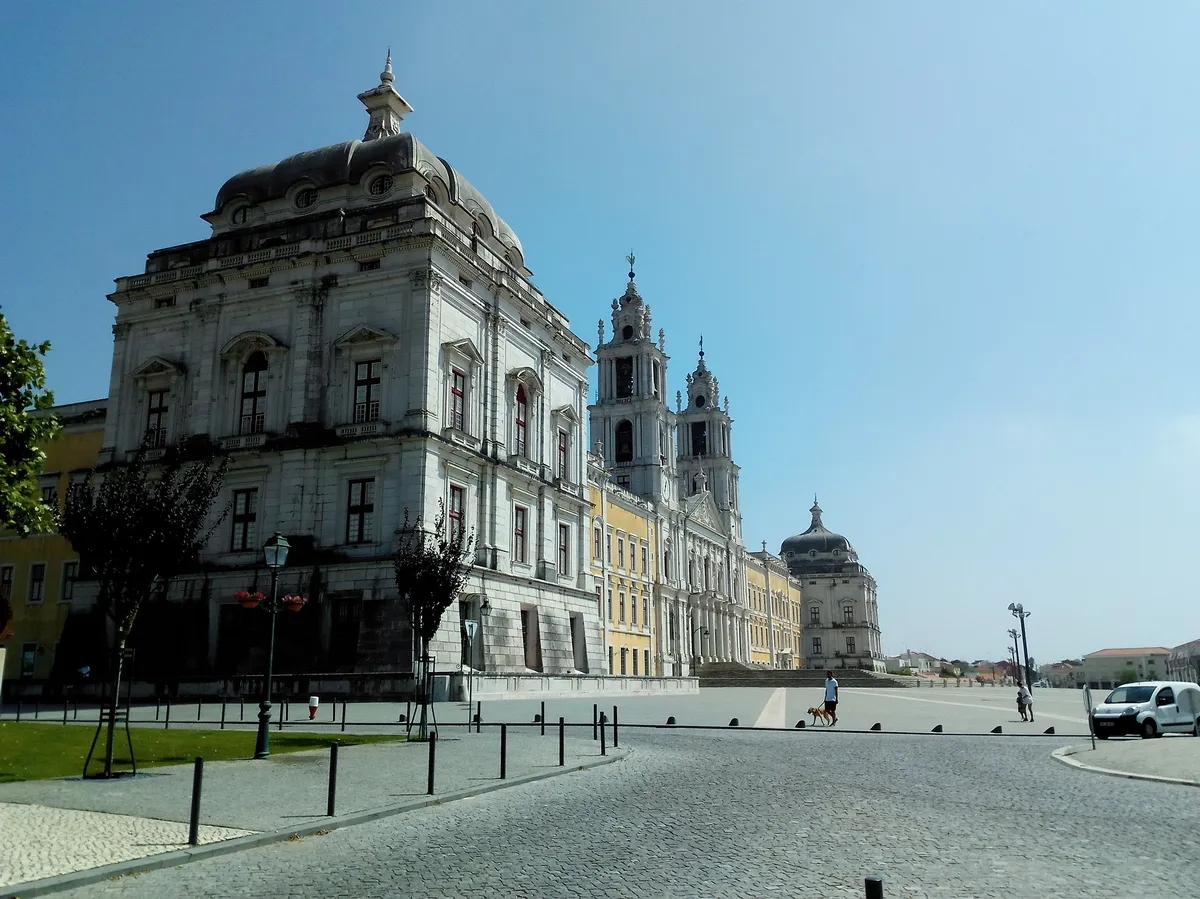
And from a cool drone shot
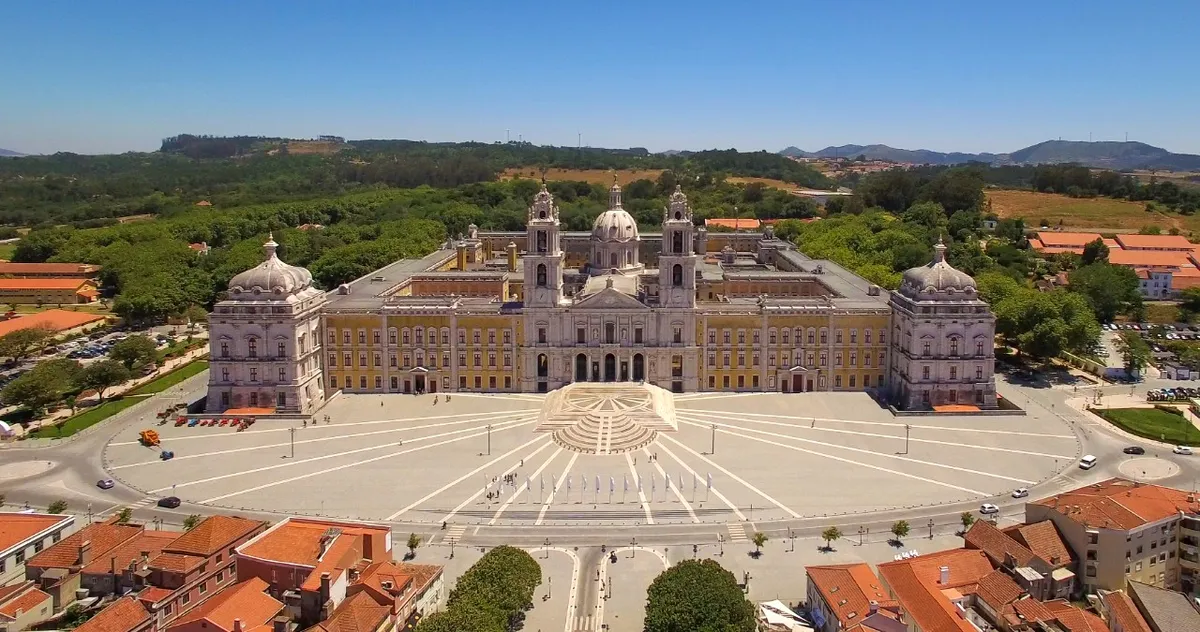
The Palace, in Portuguese more commonly known as Convento, began construction in 1717, and in 2017 the Town Hall did a whole event around its tricentennial year. They did a 3d mapping show (the thing where they project videos onto the building) telling its history. Here's a pic I took.
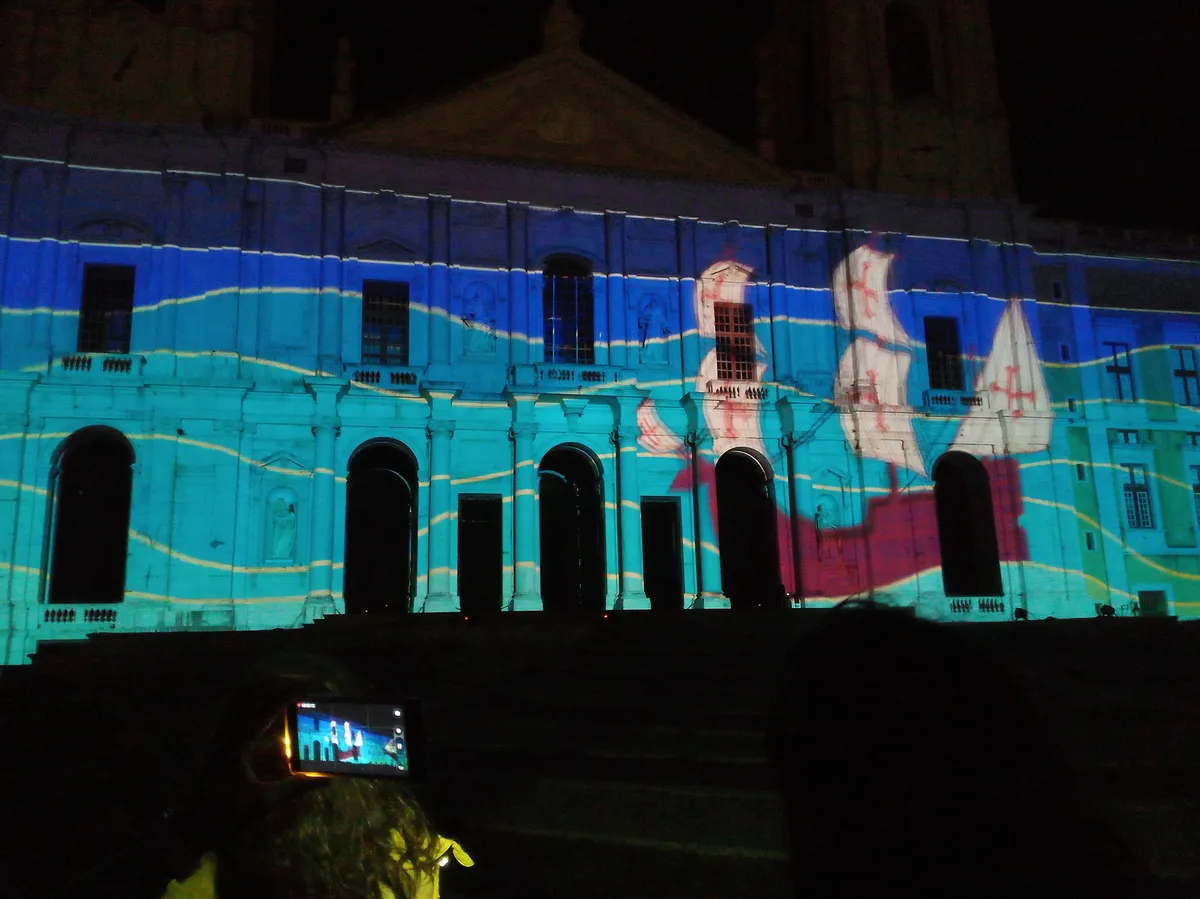
It's called Palace and Convent because it was both. It was also a Basilica (the highest type of church, a status granted by the Pope in honor of its artistic value, or its religious significance. St Peter's Cathedral is a Basilica, for example). This building was, as the youth call it, a triple threat. It has a fantastic church inside, it was an official residence of the King and Queen, and it had a Franciscan convent too. This convent gave us some cool pastries, called Fradinhos (little friars). Most of Portuguese pastry comes from convents and monasteries having too many eggs and sugar.
Fun fact, José Saramago, the Literature Nobel Winner, wrote a whole book about it. It's called "Memorial do Convento" (Remembrace/Monument of the Convent), but the English edition calls it Balthasar and Belimunda. Since high schoolers read this in Portuguese class, there's always field trips happening in the Convento.
A few weeks ago, I was strolling through the Lisbon historical center, and I came upon a used book fair. One of the stalls had paintings and engravings, and I found this depiction of the Palace from a distance, supposedly how it was in the 19th century. Coincidentally, me and my girlfriend also found a 19th century drawing of Lisbon, and a painting of Lagos, Algarve, which we will (eventually) hang in our apartment.
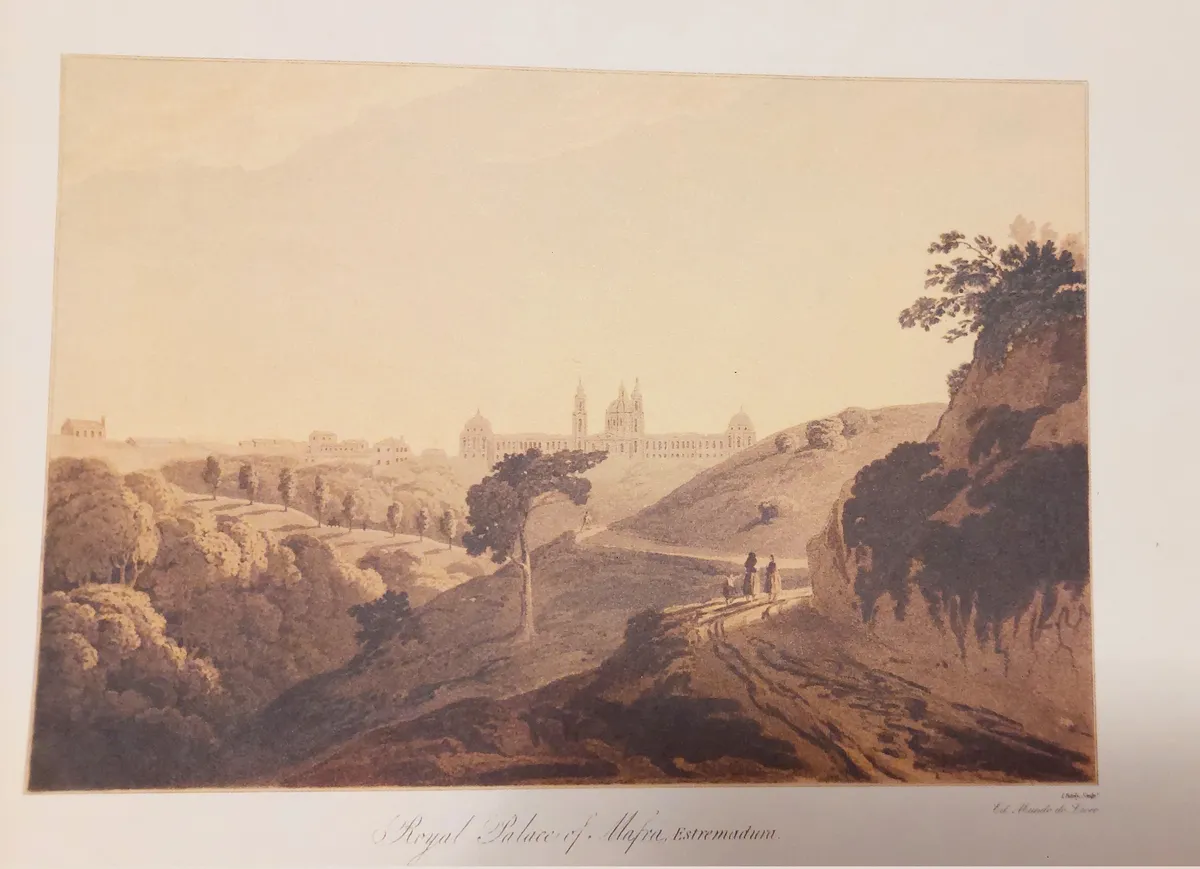
This thing was such a big deal that a lot of poets wrote about it. Sadly, the dynamics of the editorial market in Portugal have left them abandoned in archives. One specialist, however, did compile some poems from the 18th century, celebrating its inauguration.
I picked one of these 18th century poems. Here it is in Portuguese, and in my translation. The mote followed by glosa is a classic Portuguese poetical format. The mote gives the theme for each consequent stanza. Each glose finishes with the corresponding verse.
Author: Manuel Godinho de Seixas
Canção
Mote
Um Templo a Deus dediquei
Em Mafra pedregosa
Primor de todo o edifício
Que contém em si a Europa. \
Glosa
I
Fiz em meus reinos erigir
Edifícios singulares,
E reedifiquei Altares,
Que estavam para cair:
E de Roma mandei vir
Com liberal mão de Rei
Uma só Capela, e sei
Que em todo o globo rotundo
Para admiração do mundo
Um Templo a Deus dediquei. \
II
Em o sítio mais inculto,
Lá nessa remota parte,
Polida com culto, e arte,
Quis que Deus tivesse culto:
Quis pelo meu voto oculto
Que minha mão vigorosa
Se ostente em terra fragosa;
Montes altos humilhei,
Cultos a Deus tributei
Em Mafra pedregosa .
III
À mais bela arquitectura
De que todos mais se admiram
Na pedra ali esculpiram
Como do risco a pintura:
Em tudo é obra tão pura,
Que no modo dá indício,
Além de ser sacrifício
Para Deus nunca com excesso
É sim de excessivo preço
Primor de todo o edifício. \
IV
Toda a recopilação
Da perfeição mais perita
Aos mais sábios excita
Para intensa admiração:
Todo o que com atenção
Na obra com os olhos topa,
Em admirações se ensopa,
E diz em silêncio mudo,
Que é compêndio de tudo,
Que contém em si a Europa. \
Song (translation) \
Quatrain
A temple to God I devoted
In rocky Mafra,
Most perfect of all builidings
Which in itself Europe contains \
Glose
I
In my realms I set
distinguished buildings
and rebuilt Shrines
about to fall:
And from Rome I shipped
With generous hand of king
One only chapel, and I know
That in all the round globe
For wonder of all
A temple to God I devoted \
II
On the most uncouth place
In that most remote part
Polished with cult, and art,
I wanted God to be worshiped:
I wanted by my hidden oath
That my vigorous hand
Be seen in stony land;
Tall hill I shamed,
Worship to God I demanded
In rocky mafra. \
III
To the highest architecture
at which all admire
On the rock there sculpted
As from the line the painting
In all, a work so pure
That in fashion it seems,
Beyond sacrifice
To God never excessive,
But indeed of excessive price
Most perfect of all buildings \
IV
All the compilation
Of the most expert perfection
Excites the wisest
To intense admiration:
All that with intent
Through the eyes sees it,
In admirations is soaked,
And, in mute silence, says,
That it is the summation of all
Which in itself Europe contains. \
Enough about the Palace. I might do a deeper dive on it later. I plan on visiting and taking pictures of the inside. The Church has world class statues, and the Palace has a very famous library.
Landscape and some stories
I used to live in a small village, a bit north from the centre of Mafra. I think the population used to be less than 500 people. If you strayed from the main road you would inevitably end up in the woods. Since I was quite young, I used to explore these paths by bike. I use to mountain bike with my dad around these hills, in rocky Mafra. A few years ago, I took up cycling again and began re-exploring the many valleys around. These are some pics from those days.
Fauna
I came upon this creek one time, and as I was coming to a halt, I saw a little duck. As soon as he heard my tires sliding on the gravel, he sped up so fast upstream that I felt that cartoons are probably not that unrealistic. He disappeared from sight in a matter of seconds. I stayed around a bit, waiting to see if he would come back, to no avail. I passed this pond many more times, but it was usually dry. Were the ducks here just for that one time? There isn't any other notable body of water around.
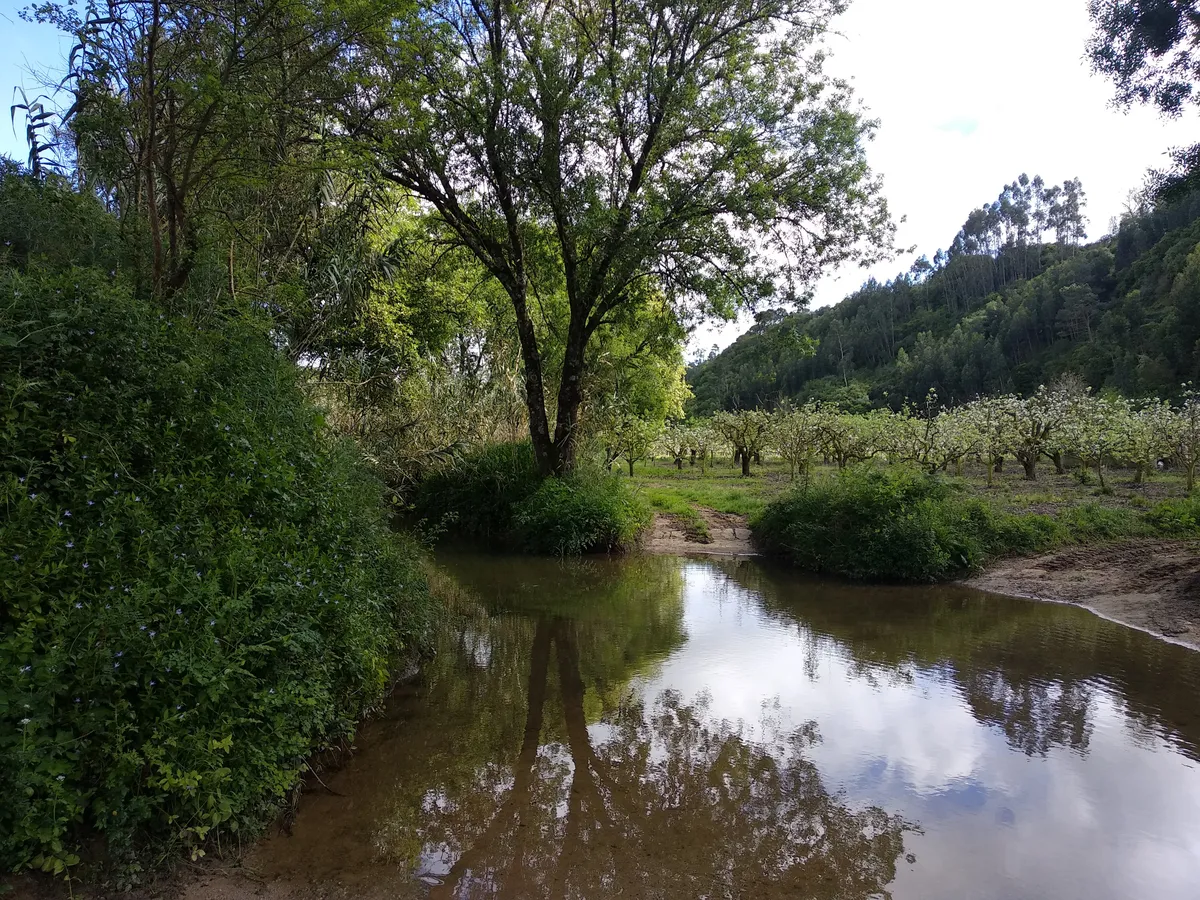
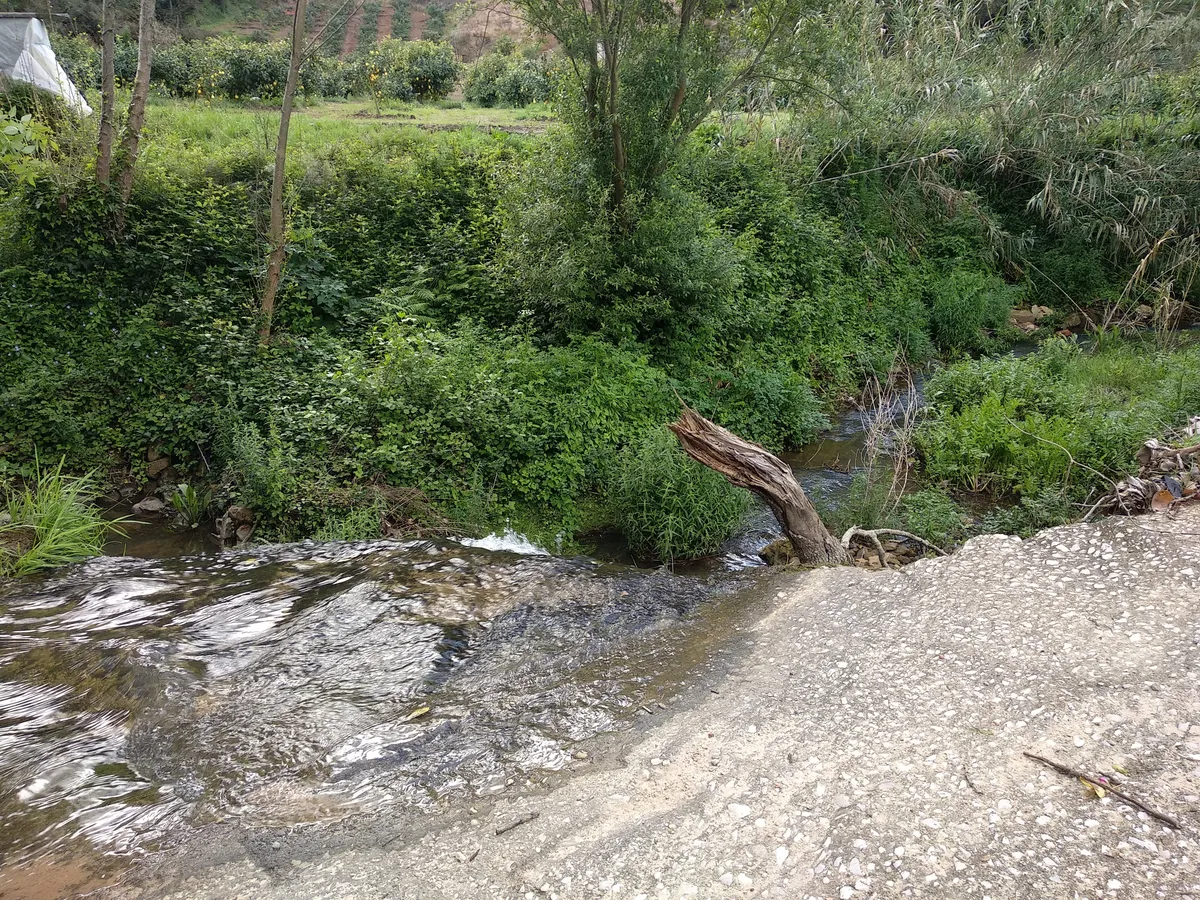
On the road behind my house, the hill slopes down into the valley. There's a little house, uninhabited now, with a large yard where sheep graze when the grass is juicy from the winter rains.
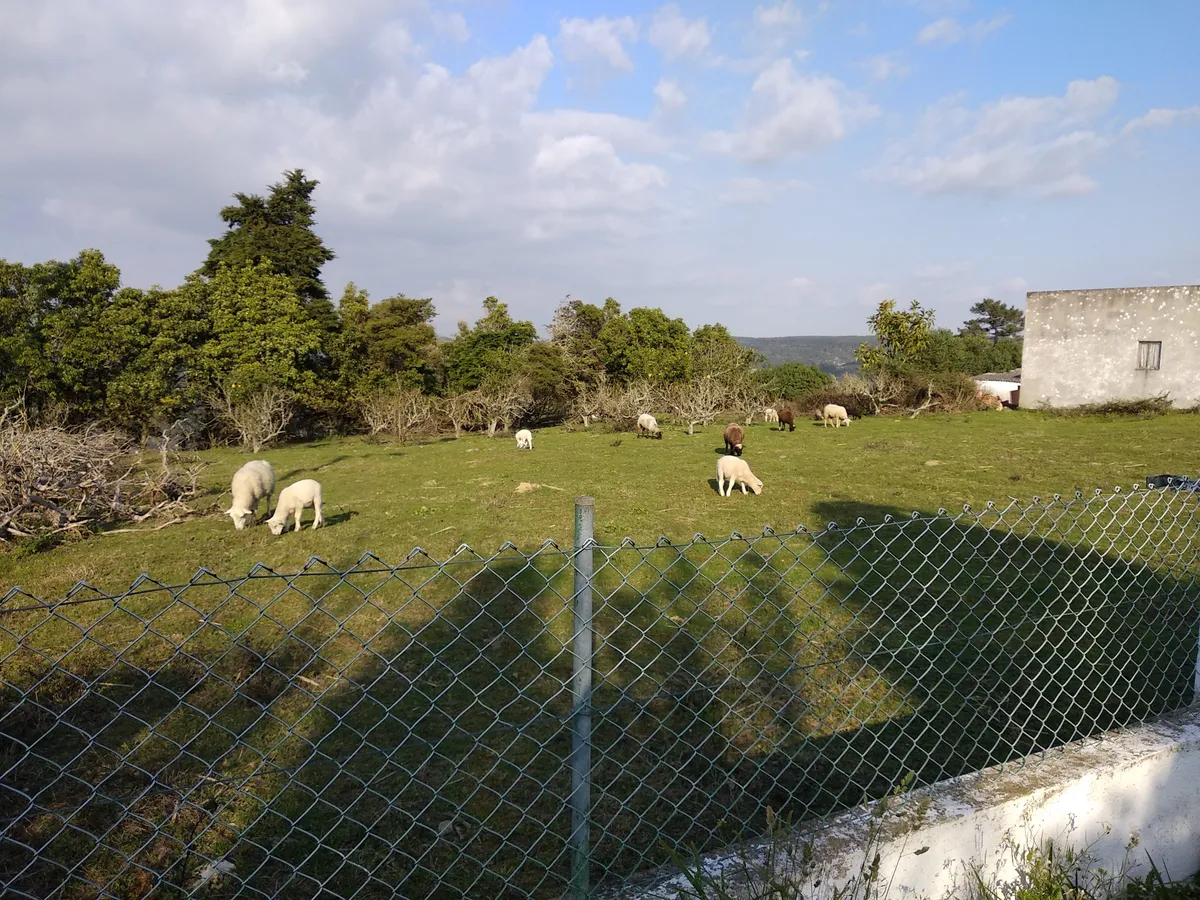
Here I caught a "sardão", a Jewelled Lizard. These used to be everywhere when I was a kid. There was a particular path between my house and my parents' office that my mom used to avoid because there were a lot of these lizards hidden in the grass. I used to be scared of them, they are iguana sized, but very tame. Now I miss all the reptiles and insects you used to see everywhere. Outside was their kingdom. When I played outside in the yard there were always a ton of bugs, small lizards, and even salamanders. I remember intently paying attention to the ground, and the sticks and the leaves. There were the playful blinking of fireflies and the intense chirping of crickets in the warm summer evenings. One time, on the beach, me and my friends caught a praying mantis, which we promptly fitted inside a plastic bottle and fed grasshoppers.
Were we paying more attention, or are the little creatures being driven away?
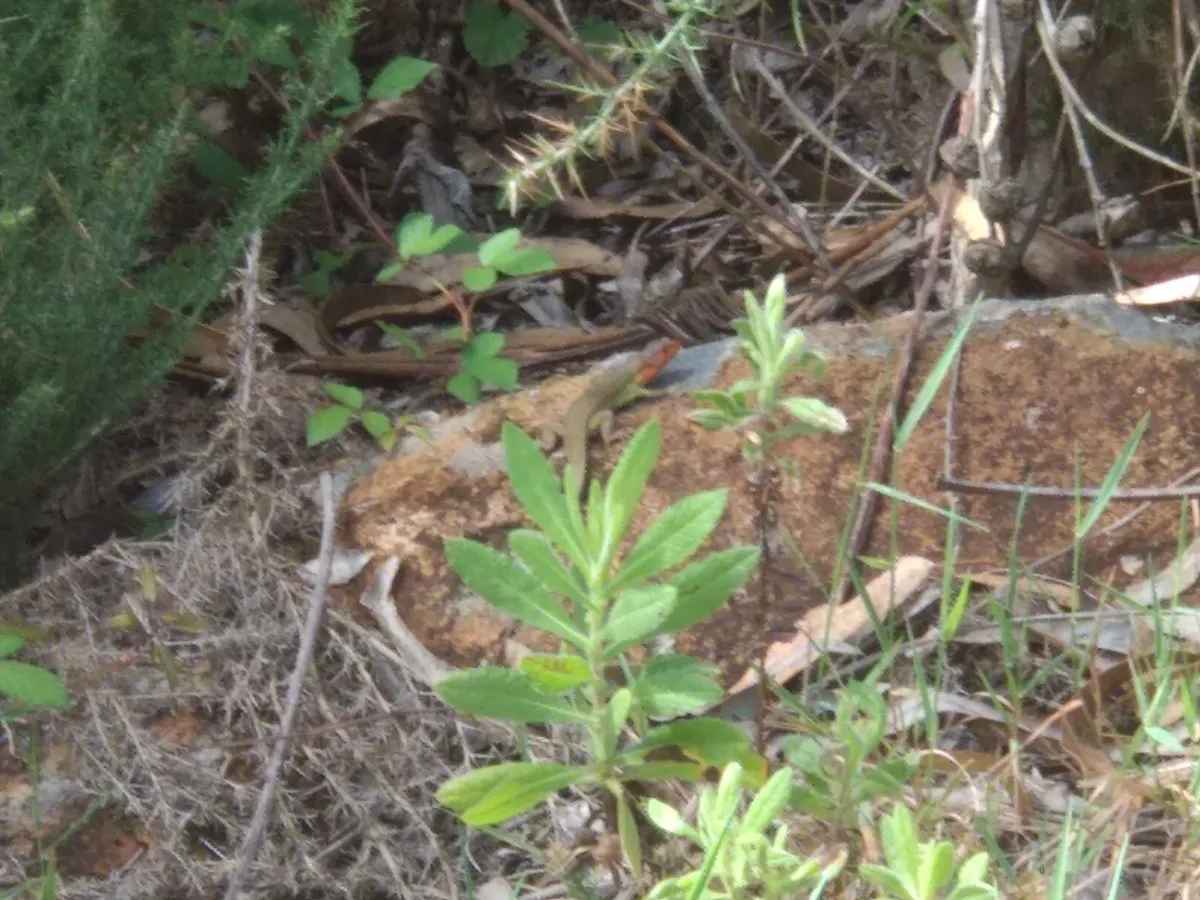
A particularity of Mafra is that a big part of the whole parish is the "Tapada", a sort of enclosed royal hunting grounds. Here's a map. To the right of the Palácio, the whole green part is the Tapada. Its around 1200 hectares.
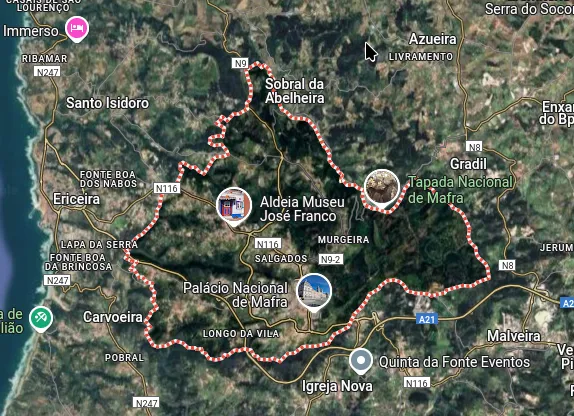
A stone wall encloses it all around. You can see it here, albeit completely covered in ivy.
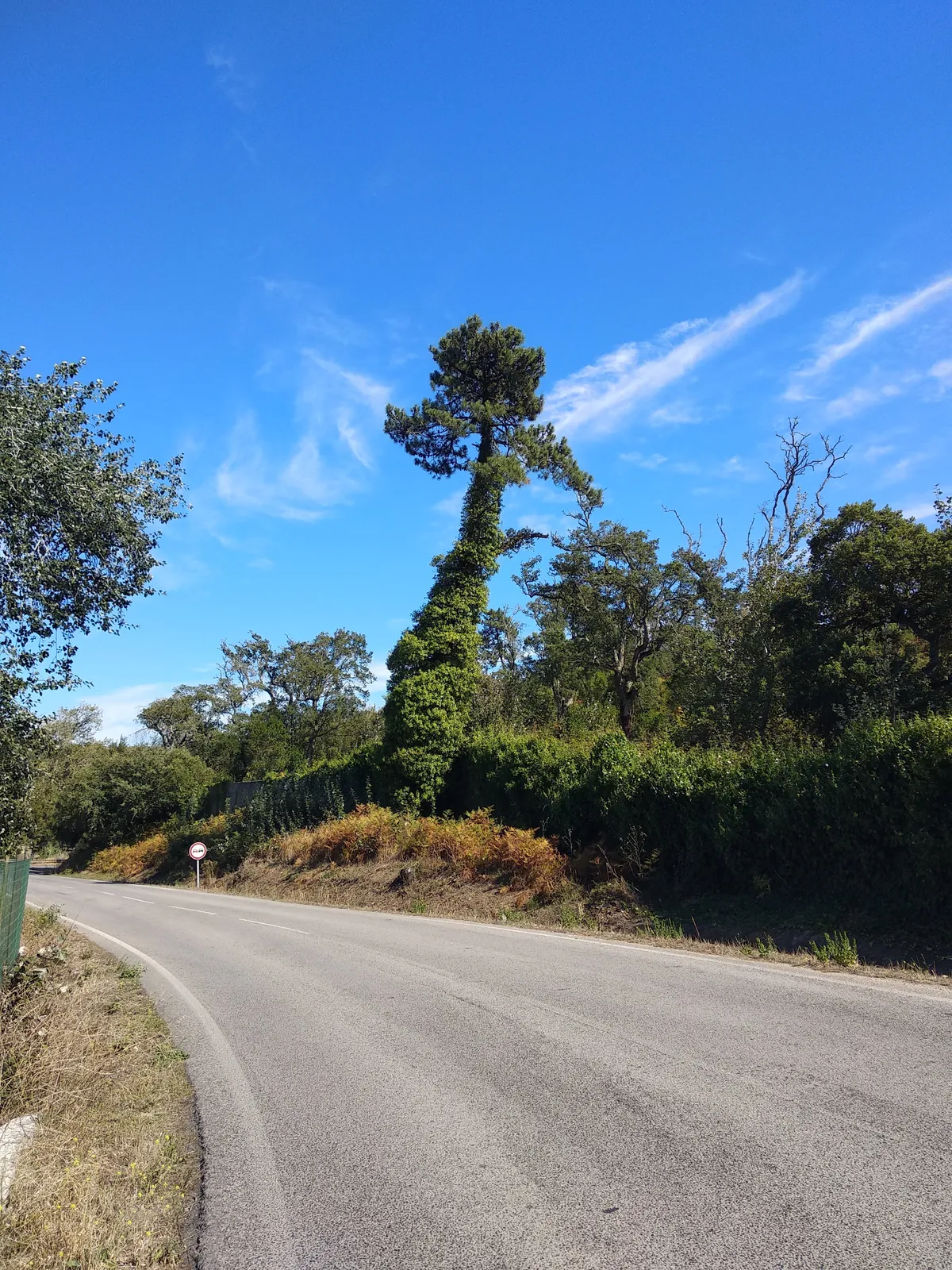
You can get in and follow some hiking or cycling routes. Part of the appeal is that deer, does, and boars roam freely. They are used to human presence so they aren't very skittish and you can catch some cool pics. I did not succeed, as I tried to take the pics while cycling. Here's my best attempt.
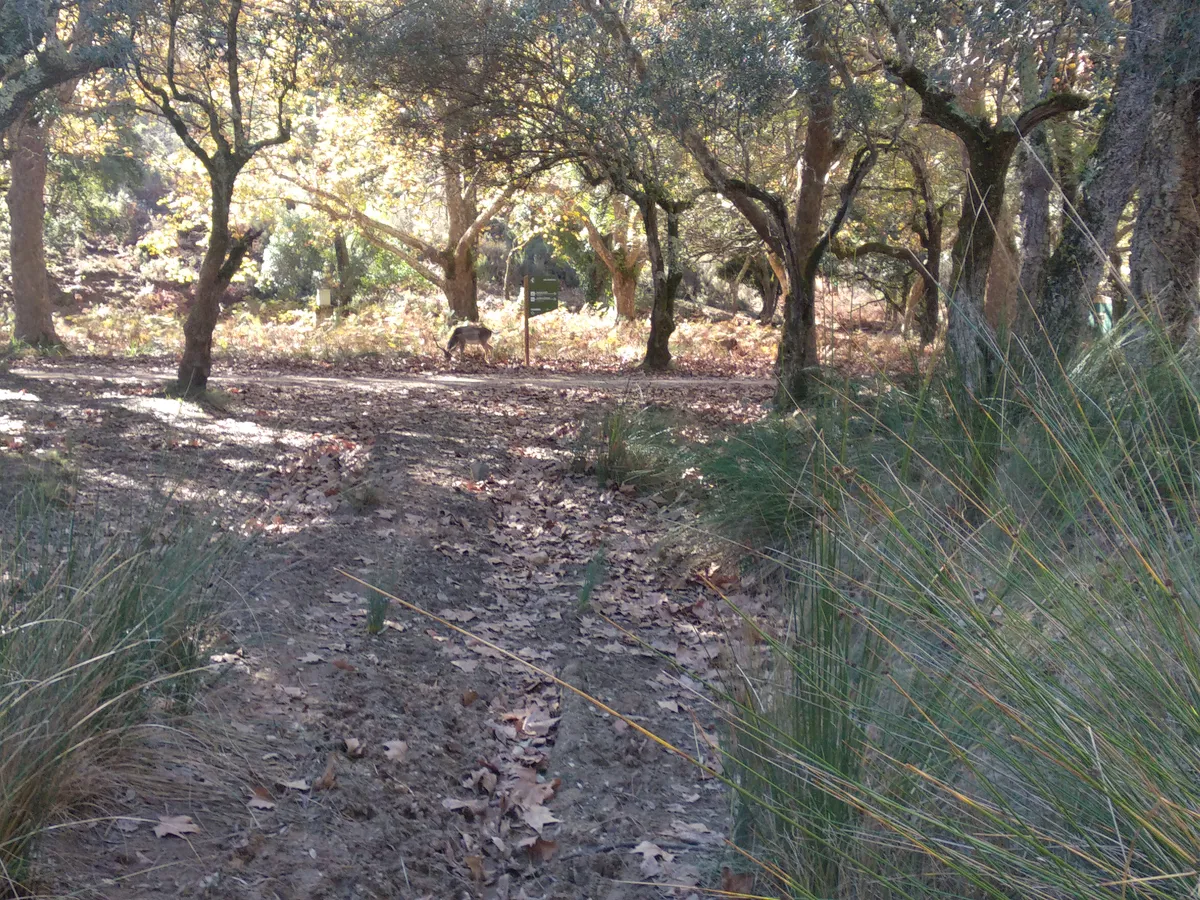
Yes, I did crash almost immediately after this pic, and I have a video evidence...
Flora
In the spring and summer, the fields are covered in flowers. The hills roll, mantled in the yellow of the marigolds.
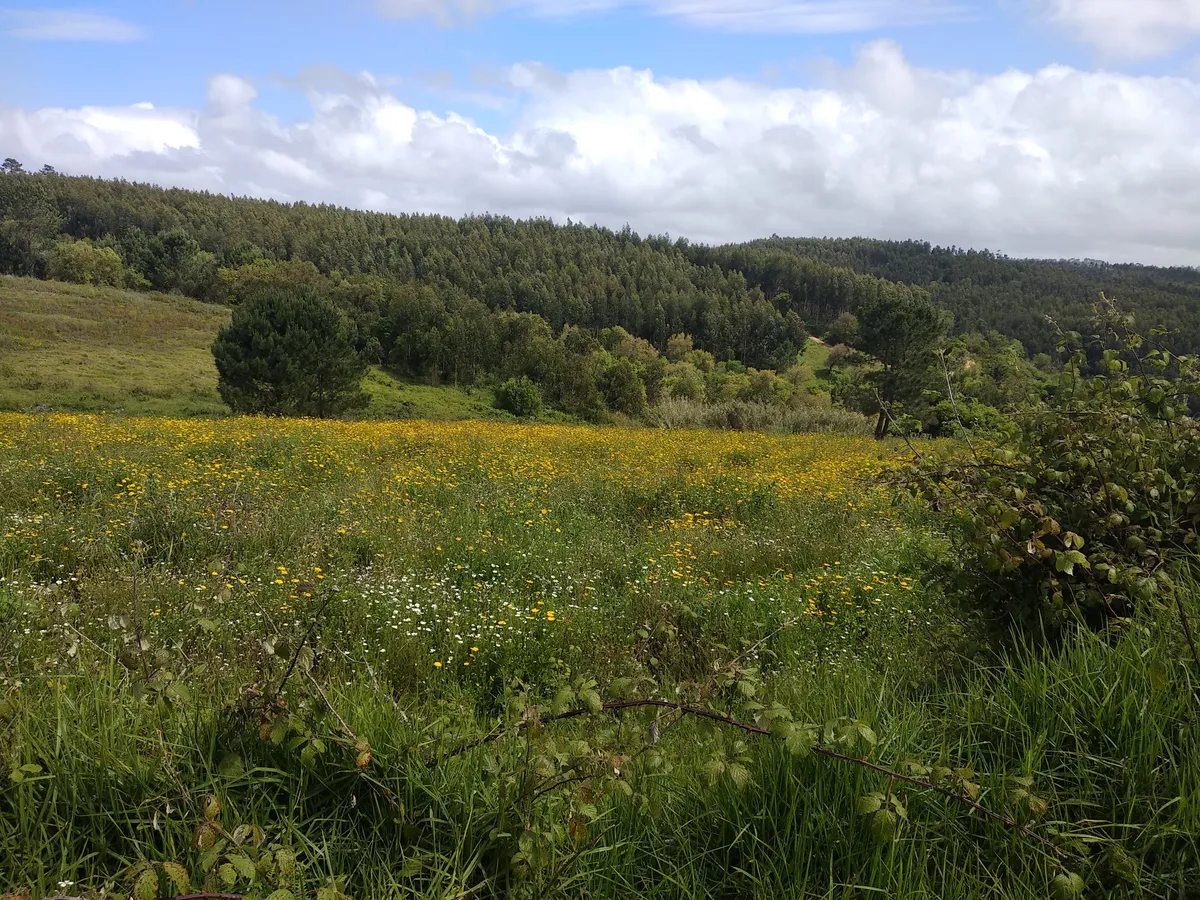
Funny trivia about marigods. Their called "malmequeres" in Portuguese. It translates literally to "wants evil for me", but the meaning is more in the sense of "wants me not". The children used to pluck each petal one by one, chanting "mal me quer", and "bem me quer" alternately (i.e. wants me not, wants me). Whichever the last petal chooses, is the fate of your love. It's essentially the loves me, loves me not game in English (duh). This is a very basic form of divination, very common in popular European culture. Anyway, here's some marigolds from my yard. There were some bees buzzing around, but you can't really see them in the pic.
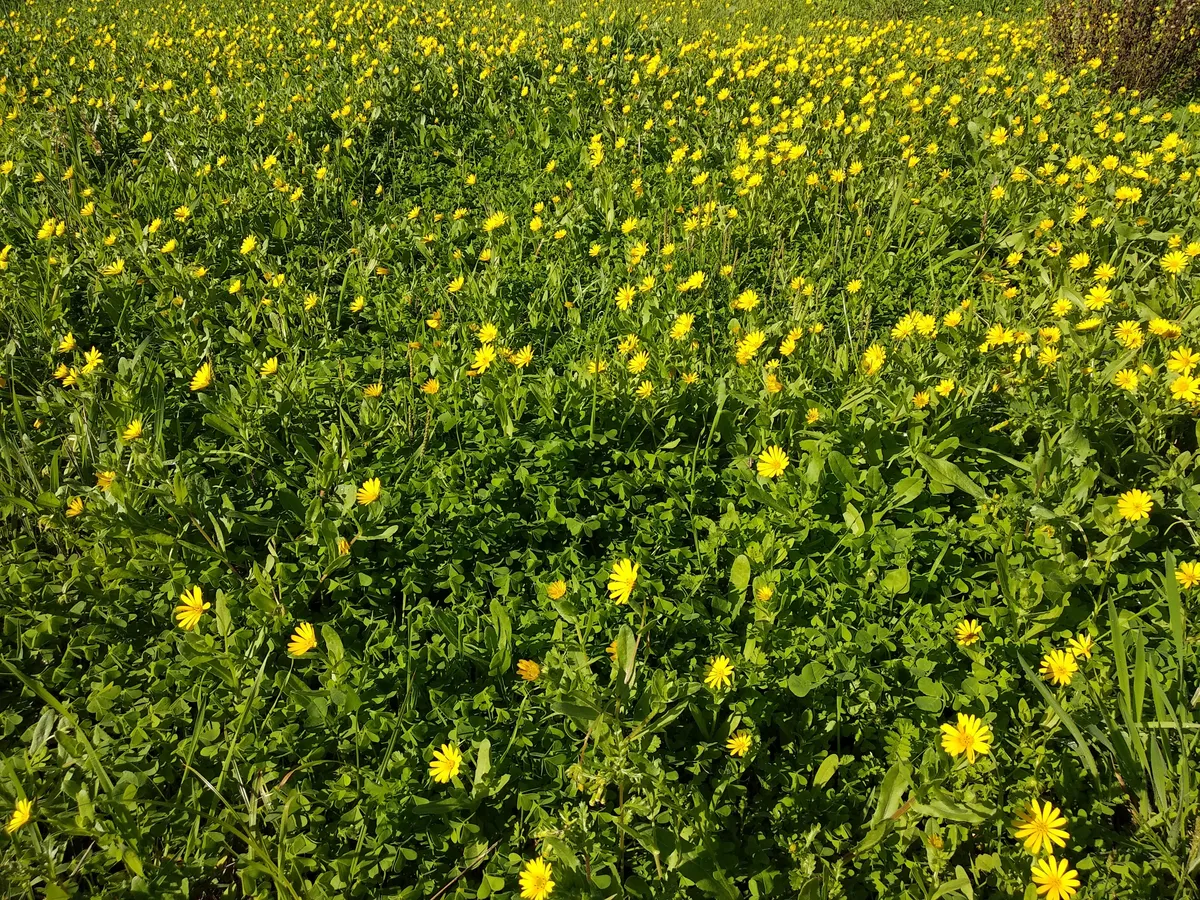
Behind the Palace/Convent there's a public garden called "Jardim do Cerco". It was a great place to hangout back in high school, and it is where they hold the annual Festival do Pão. There's some enclosed flower beds with some cool flowers.
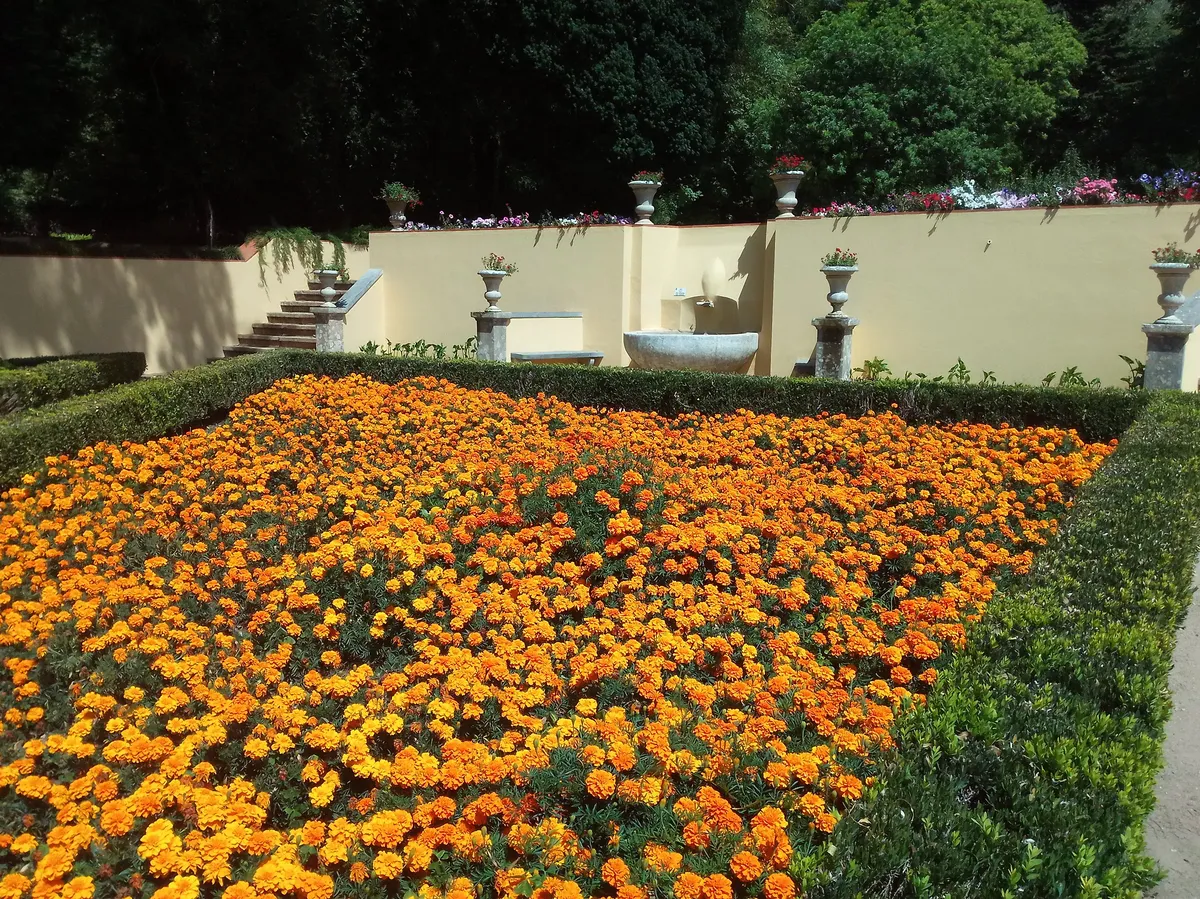
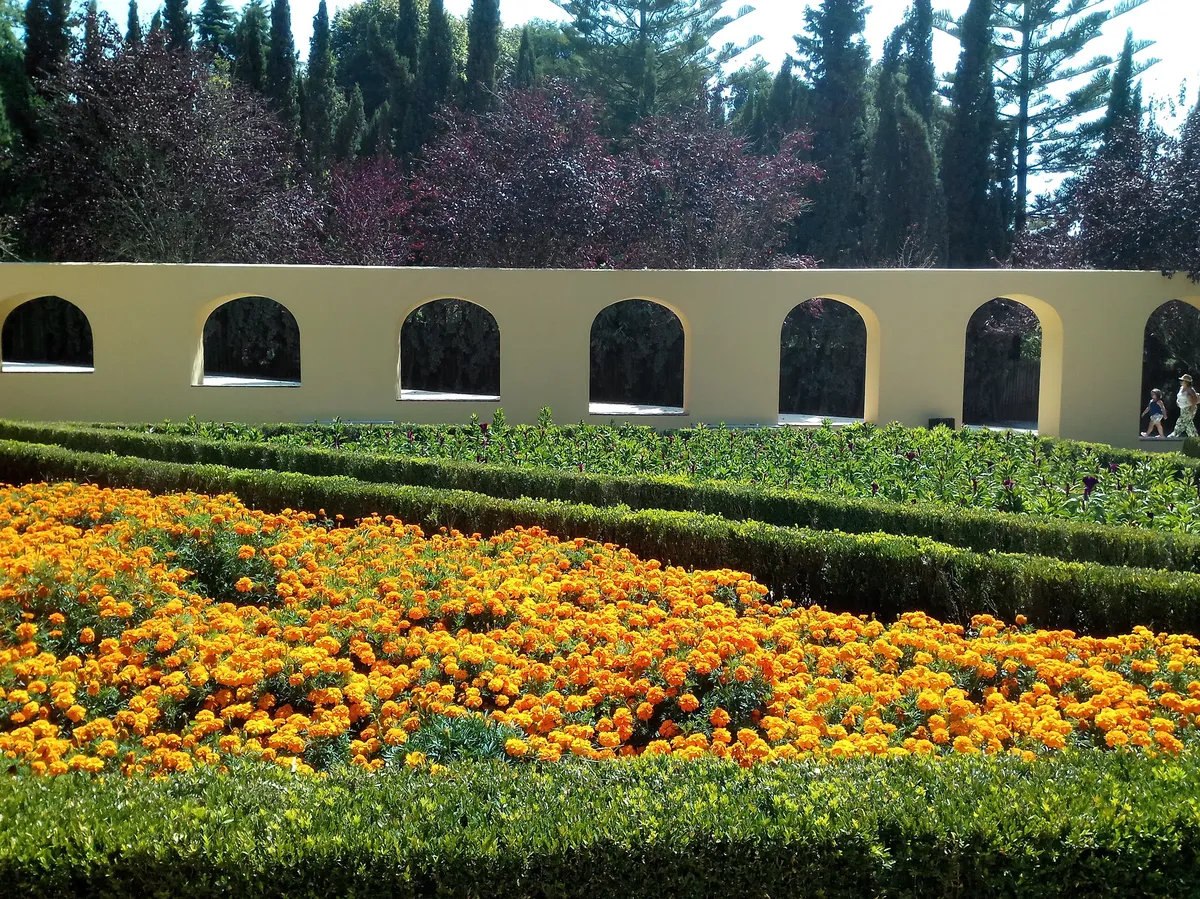
During the pandemic, me and my mom became really enthralled by the idea of having green thumbs. Here's a three phases of a flower bed we planted in the spring of 2021. First, while still stemming.
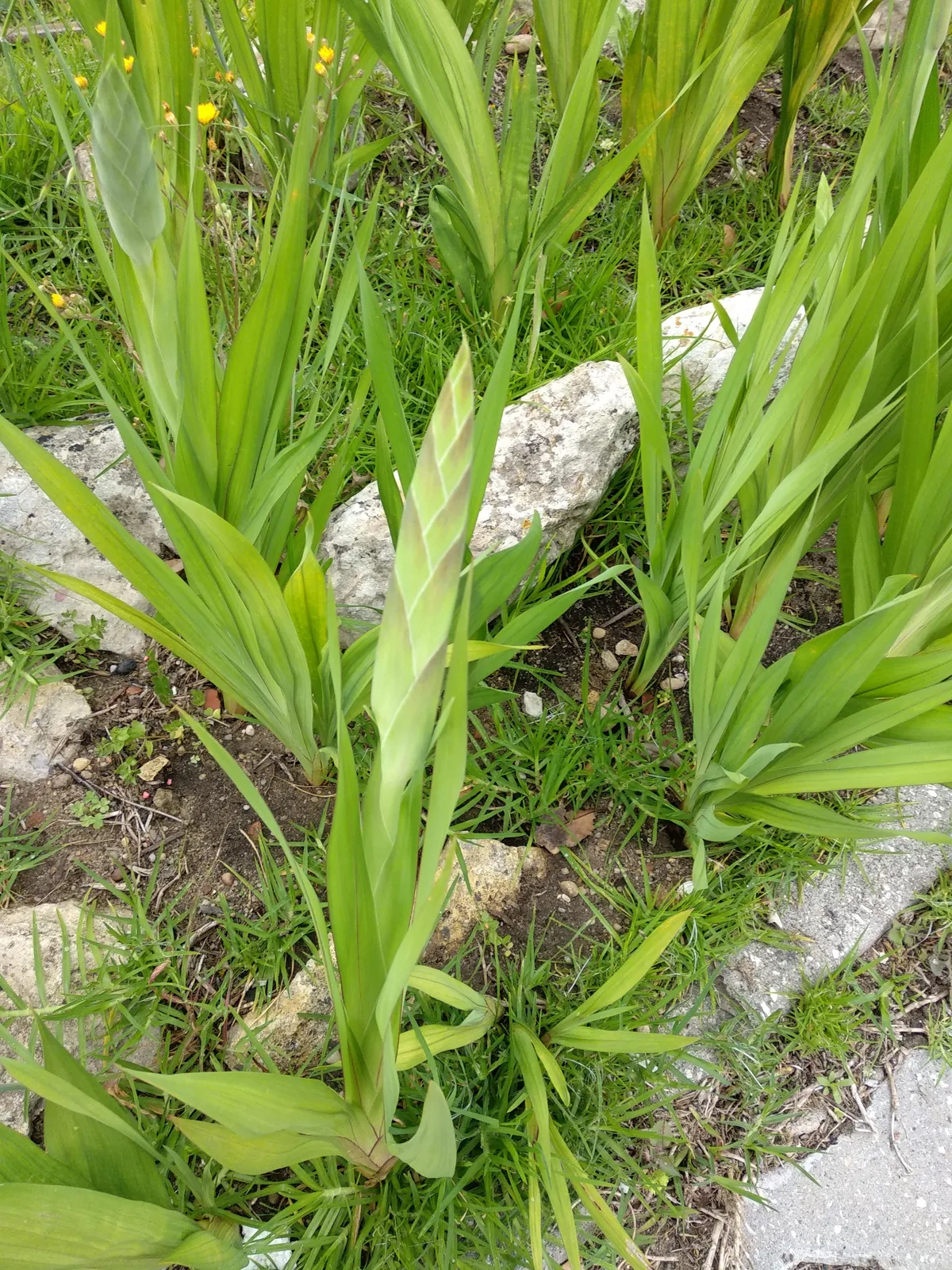
Then, beginning to bloom.
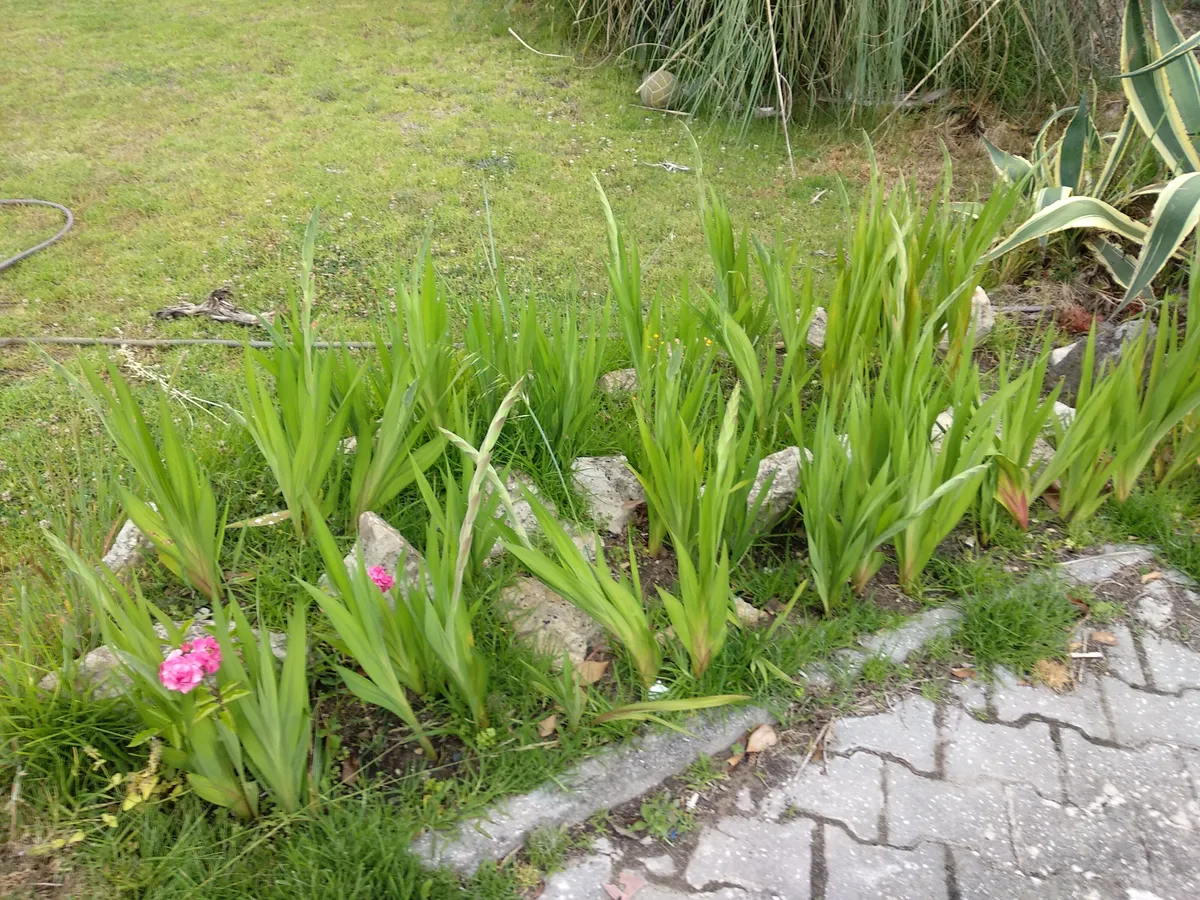
And finally, in flower.
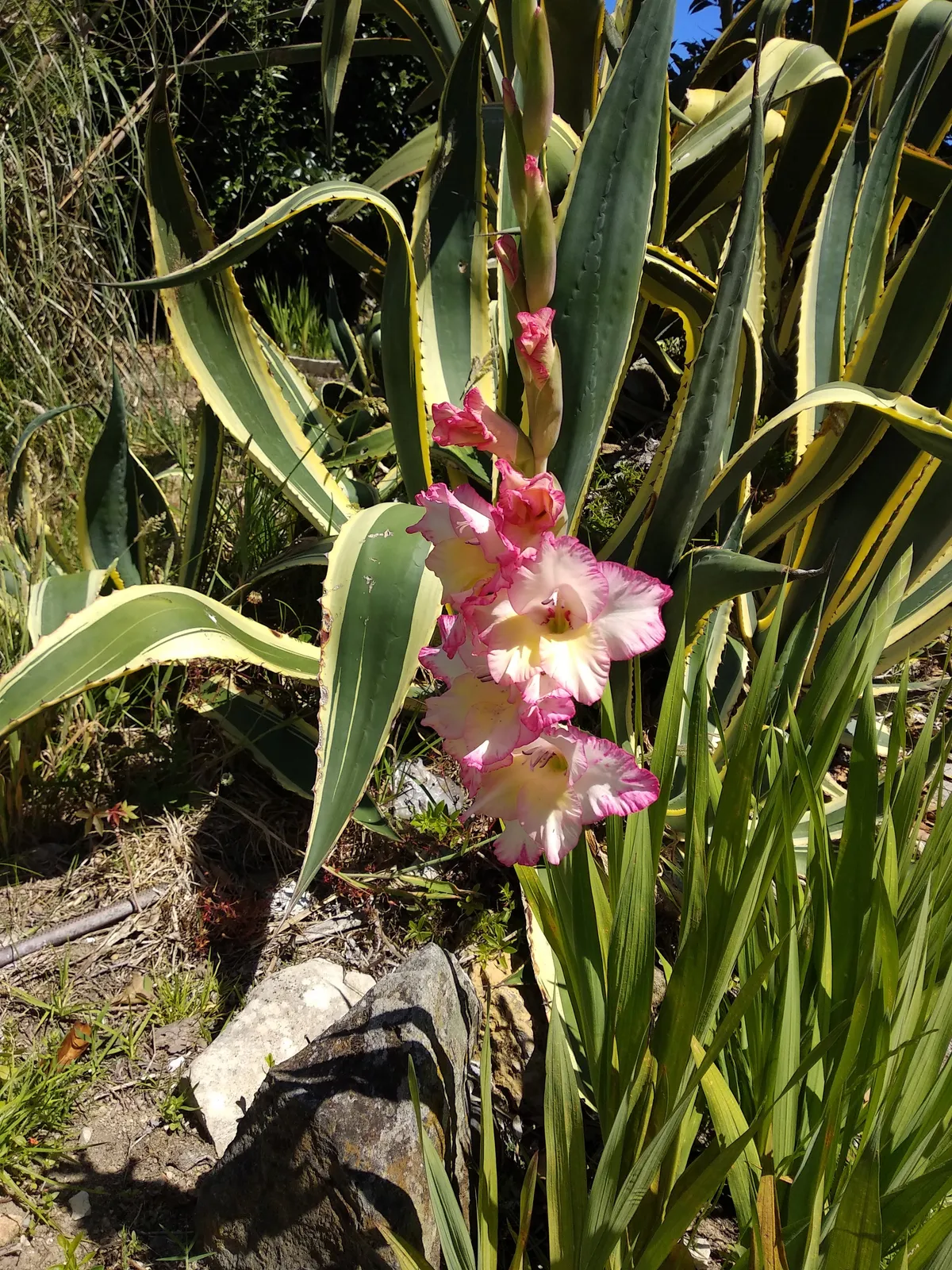
It took a couple of months to grow, but from the second to the third step in blooming the gap was 2 days. It's ironic that me and my mom went every day outside to the yard to check the progress in the early stages, when not much changed, and started to go out to check less in the later, faster paced stages. We almost missed the in-between phase, when you start to see some pink emerging.
This phase of our lives also coincided with our agave's blooming. Agaves bloom once in their lifetime, after 10 to 30 years. Ours took 30 years! And it decided to bloom right when we cared to watch. You can see the agave in the previous photo, behind the flower. It has green tongues with yellow stripes. Many times I was pricked by its thorns. One day, in the spring of 2021, a flower stalk shot up. It was really quick, and if we weren't in our gardening phase we would've missed it. This is how it was the day I noticed it. Just a tall stalk, rising to the skies.
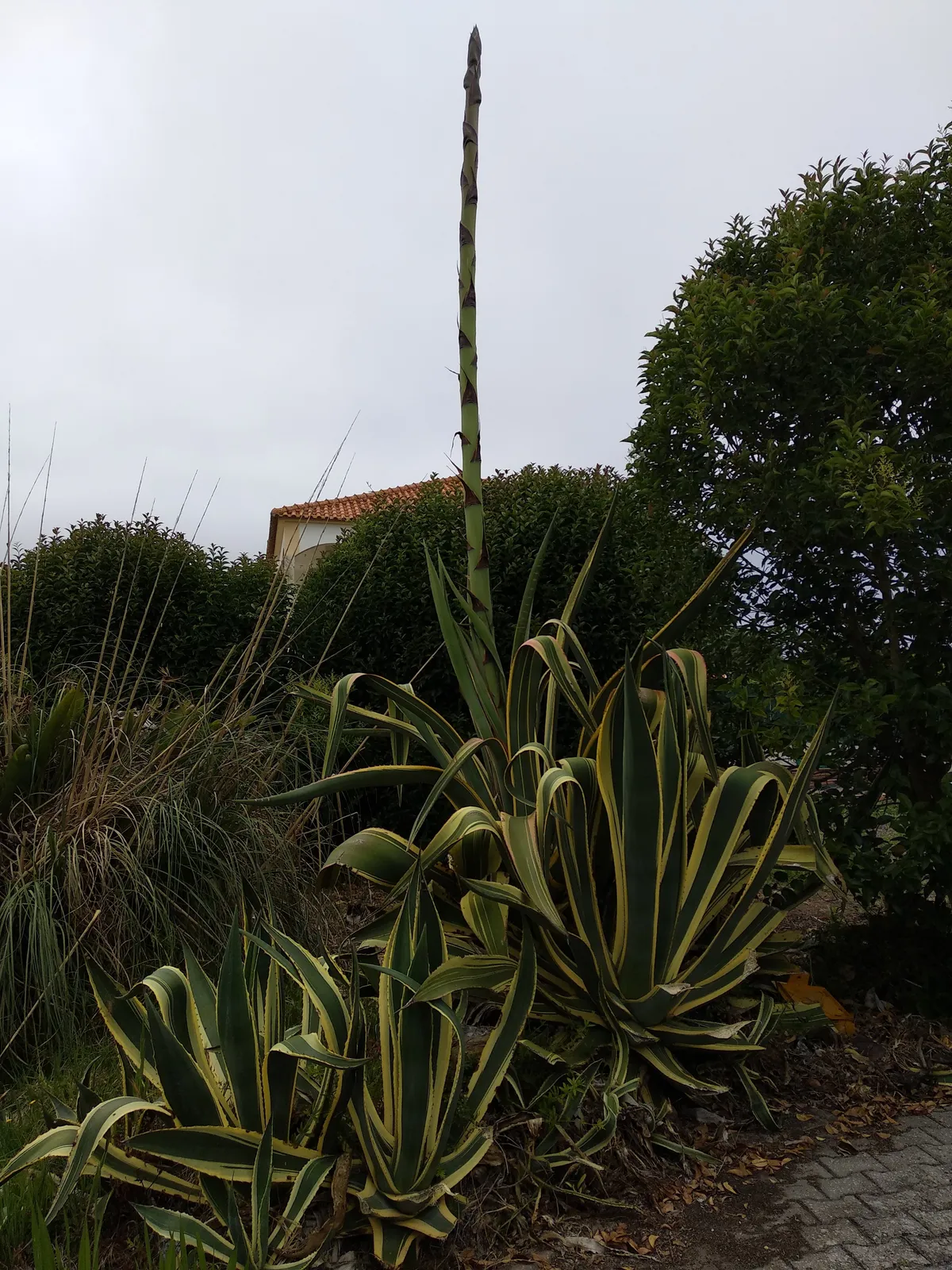
A few weeks later, the flowers began to sprout.
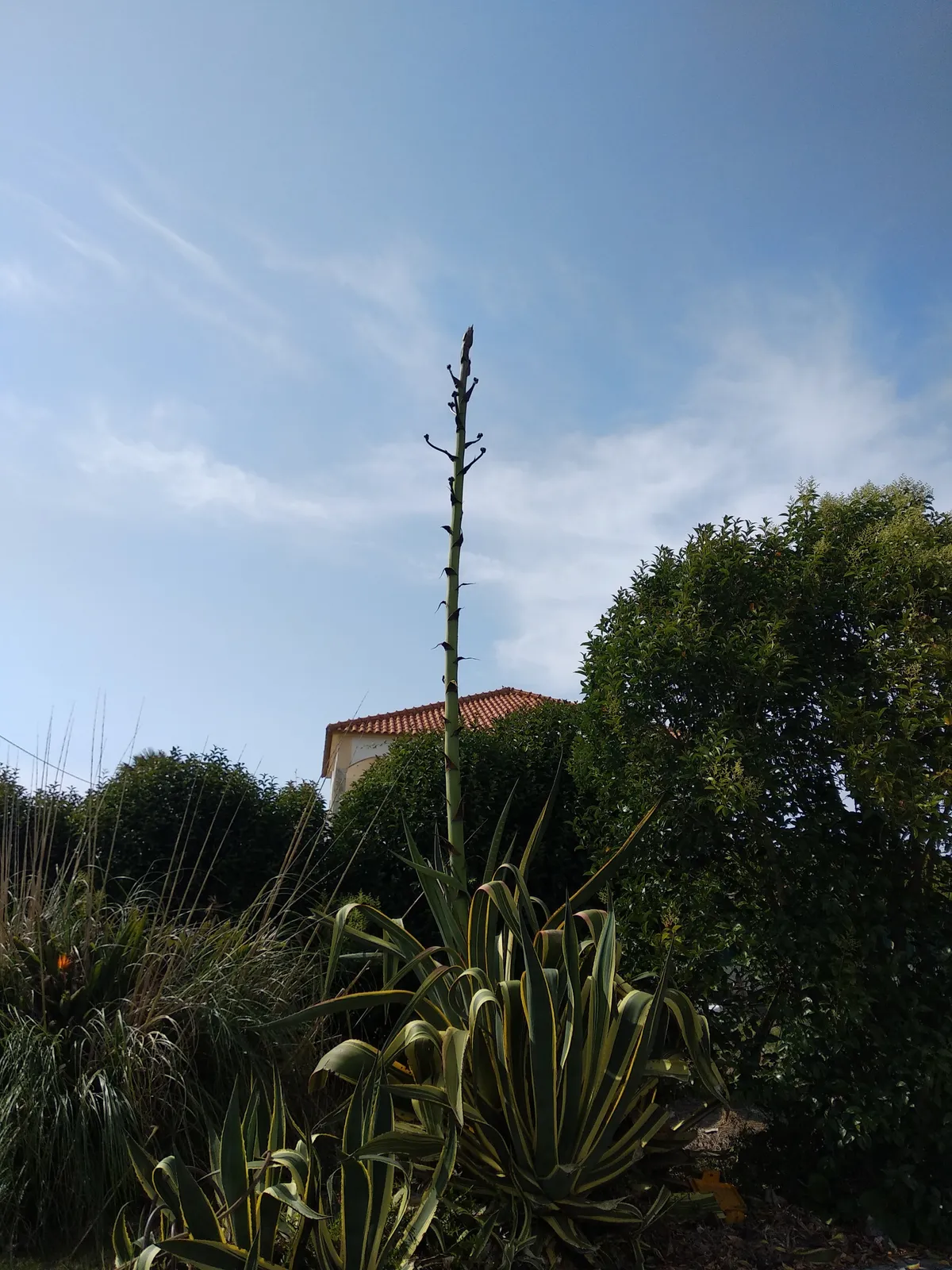
And a bit later.
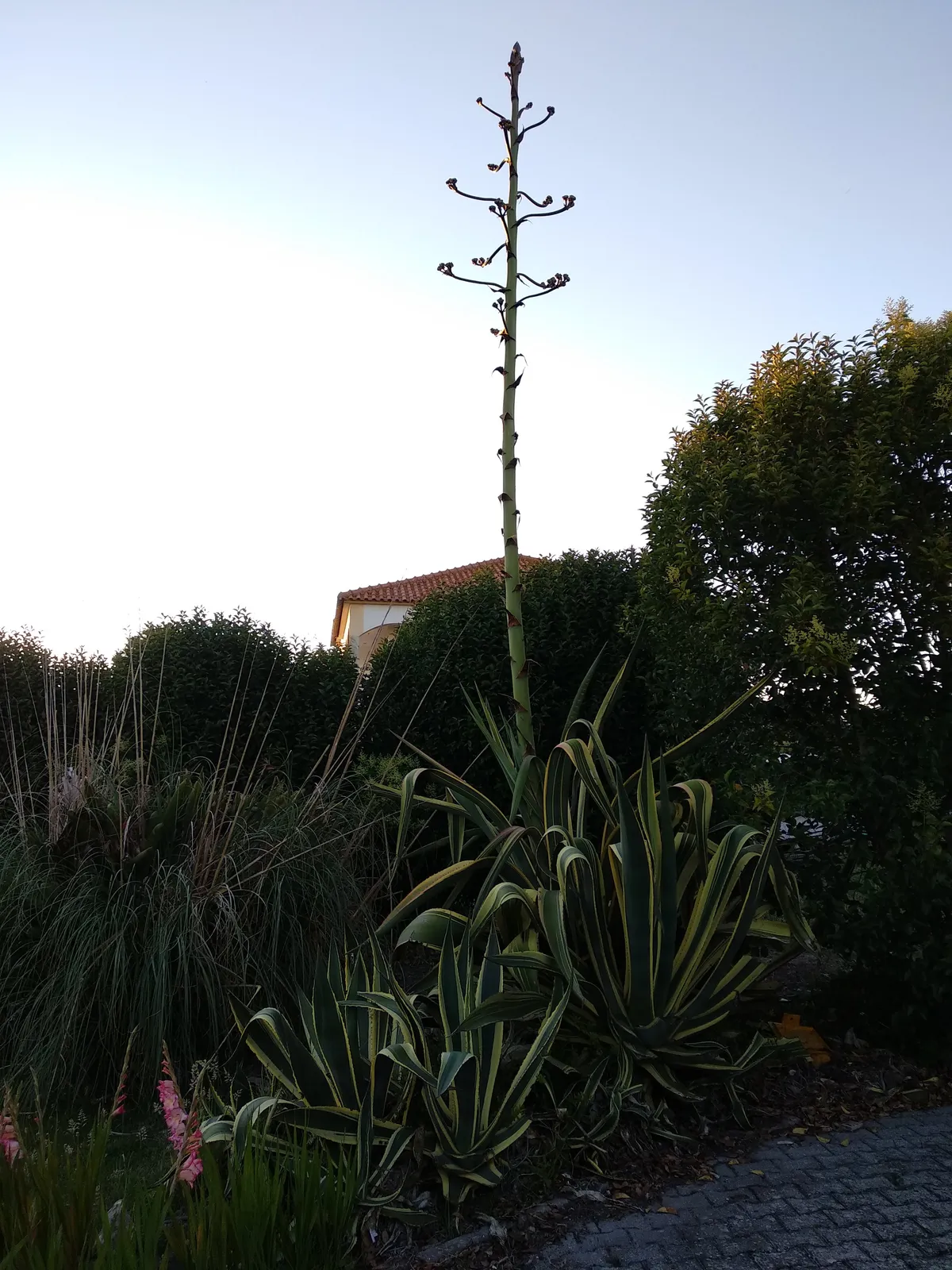
Finally, it fully bloomed. It's a strange plant. It looks like a tree, but it is a flower. It seems a bit out of this world, like it would fit well in a 70's sci-fi movie set in Mars.
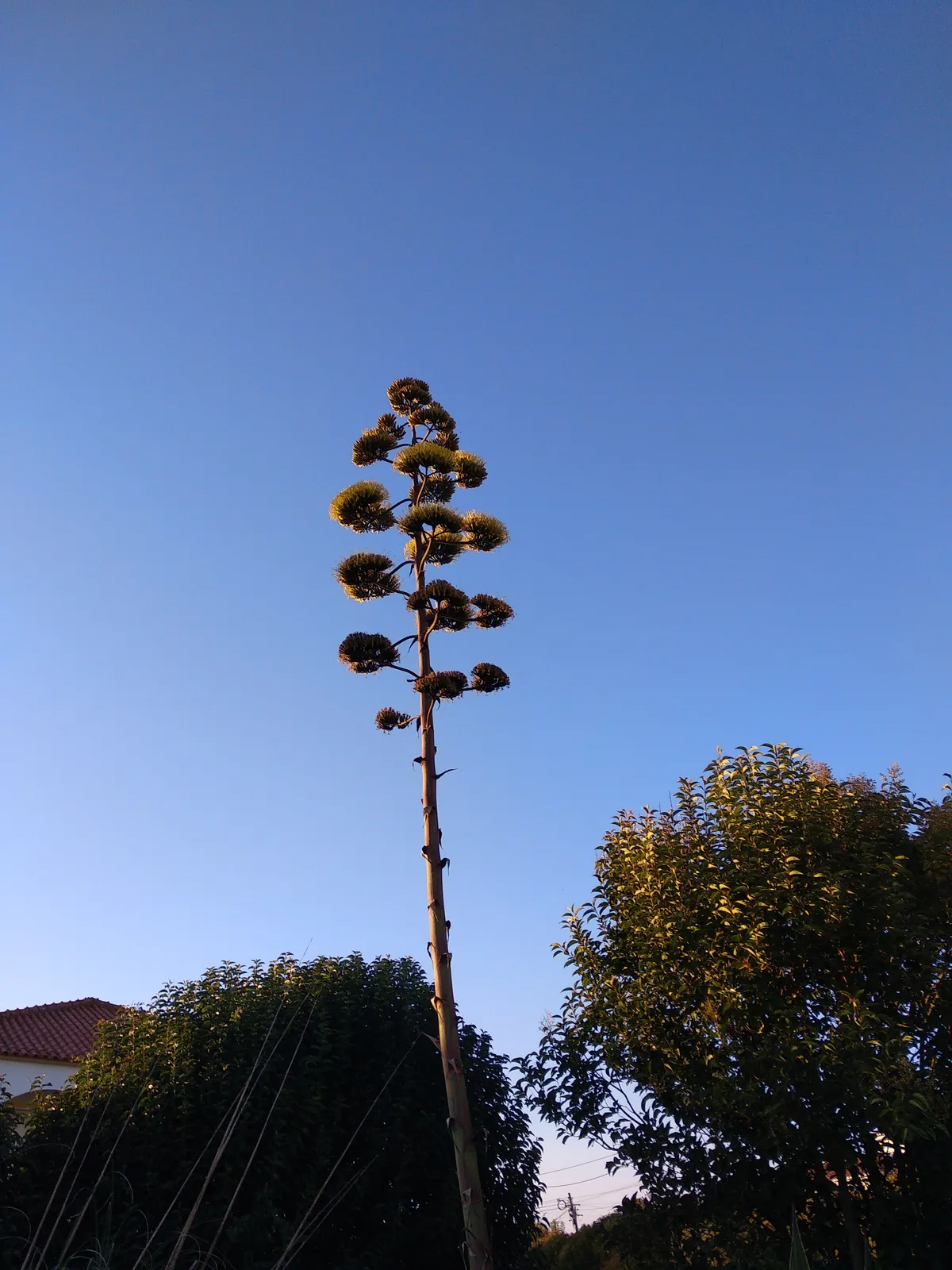
After this I think it dried out. We read online that the stalk would fall down after it bloomed, and we kept waiting around for it to happen, but it never did. Eventually we stopped paying attention. I'll remind myself to look at it when I visit again.
Digressing into windmills
Around my village the countryside is spectacularly hilly. There are hundreds of little valleys. On the summit of the hills you can see electric windmills.
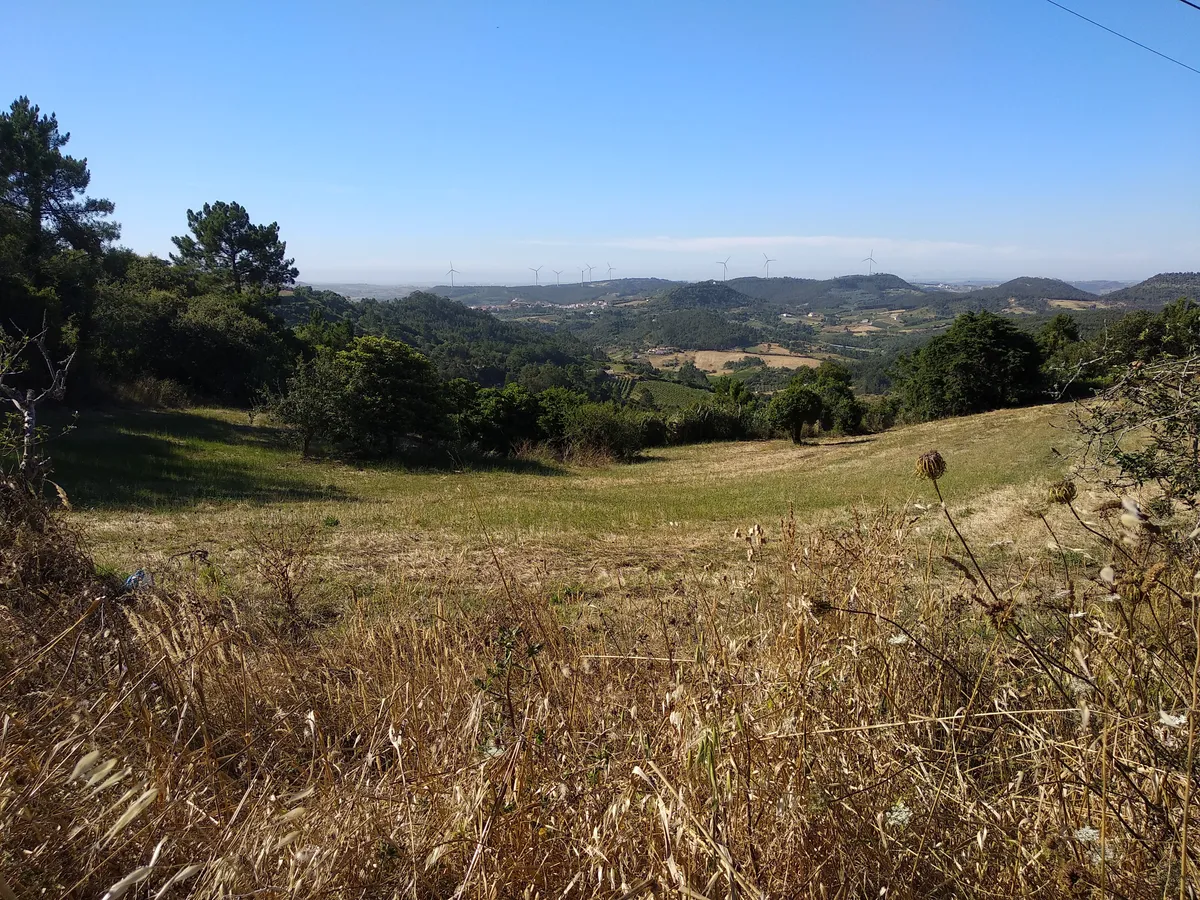
And if you can't see it in that photo, here's some close up shots.
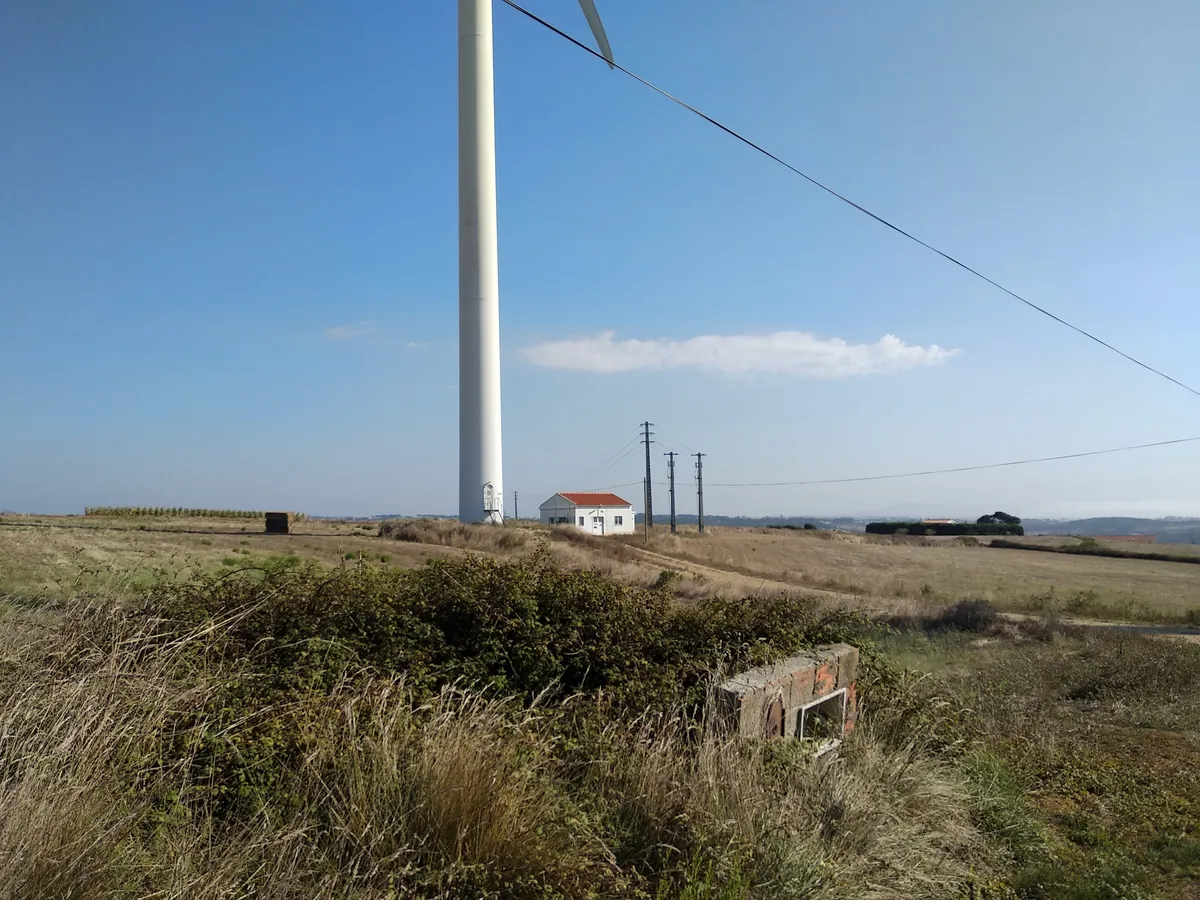
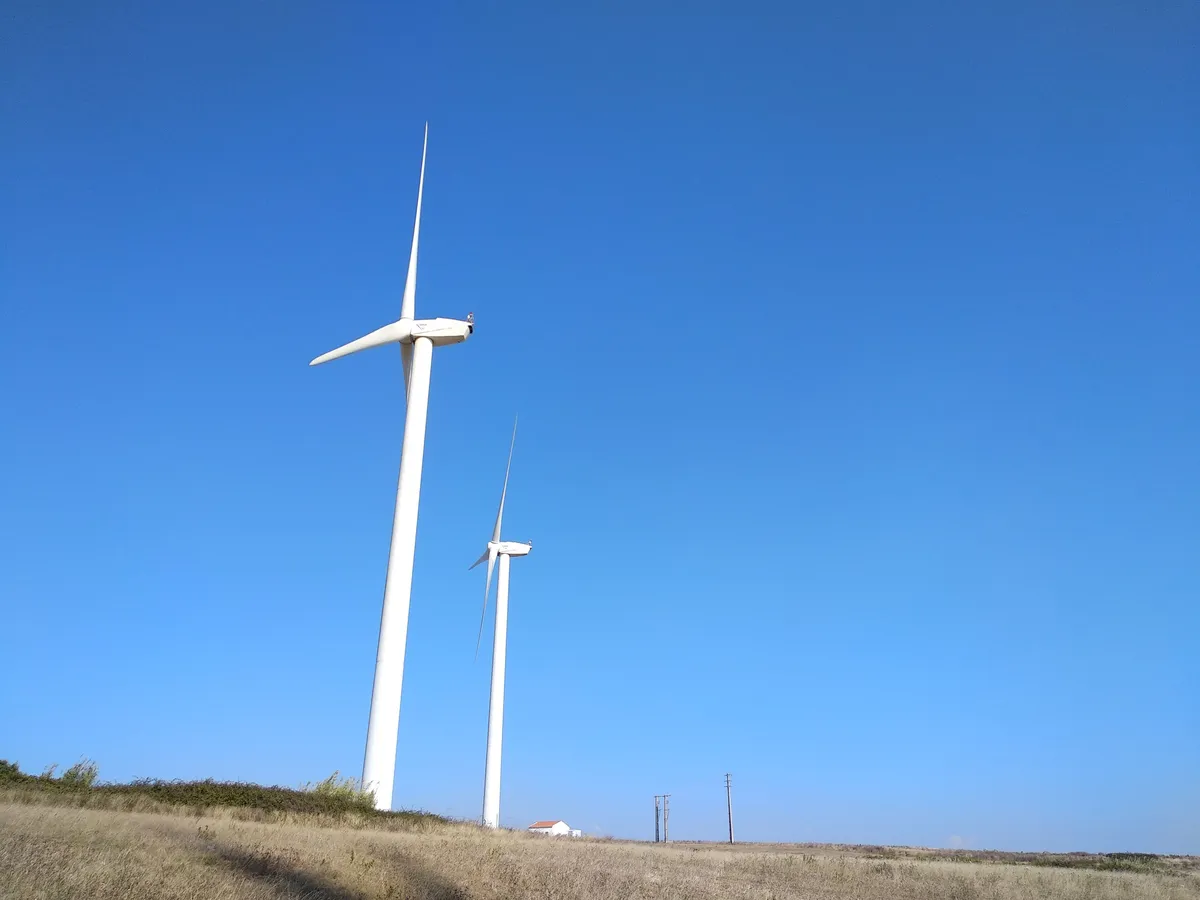
Speaking of windmills. I mentioned before that this area is known for its wheat and bread. A particular thing that made bread such a characteristic thing of Mafra is that the winds allowed traditional windmills to dot the landscape. The wheat was milled in these small windmills. Sadly I just have one of a derelict windmill, and one a bit too far away. Here's one I got from the local newspaper. They used to have sails, some still do, but it's not very common.
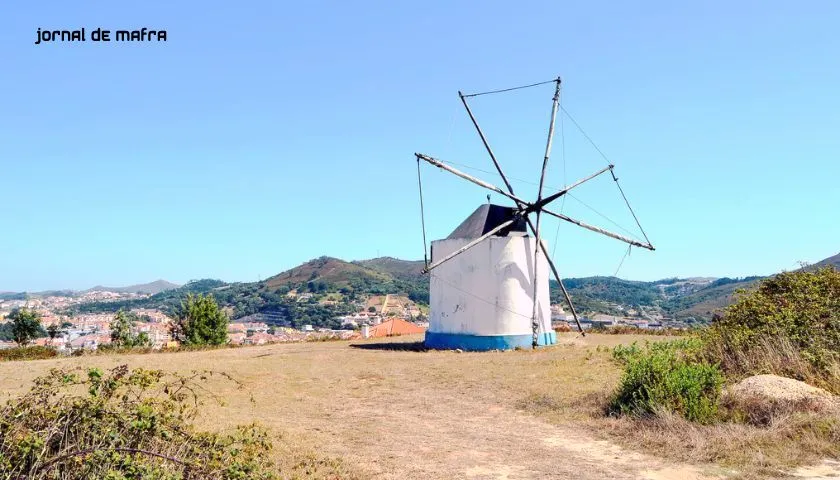
My photo of a derelict windmill.
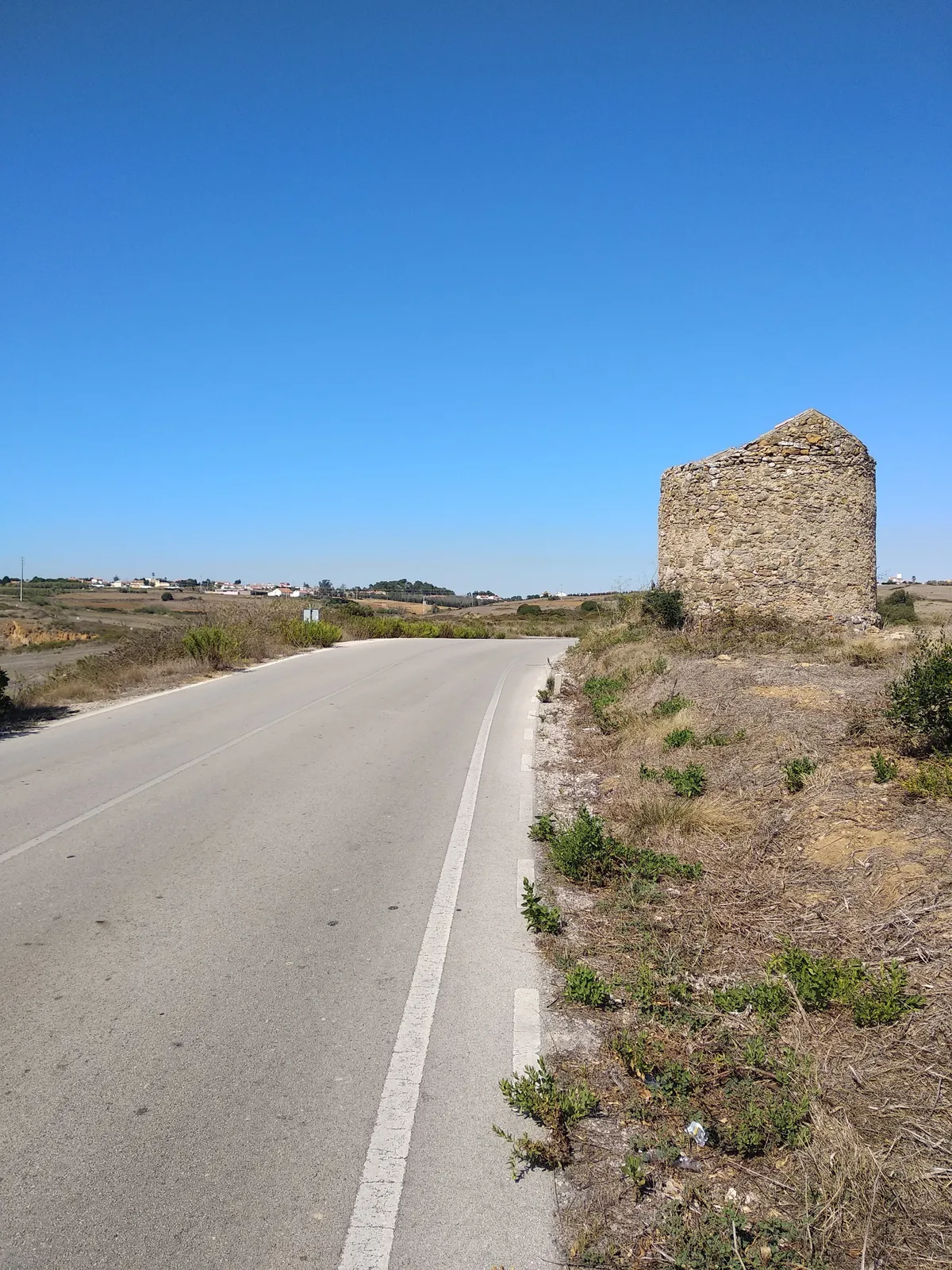
And one too far away (three stages of windmill being?):
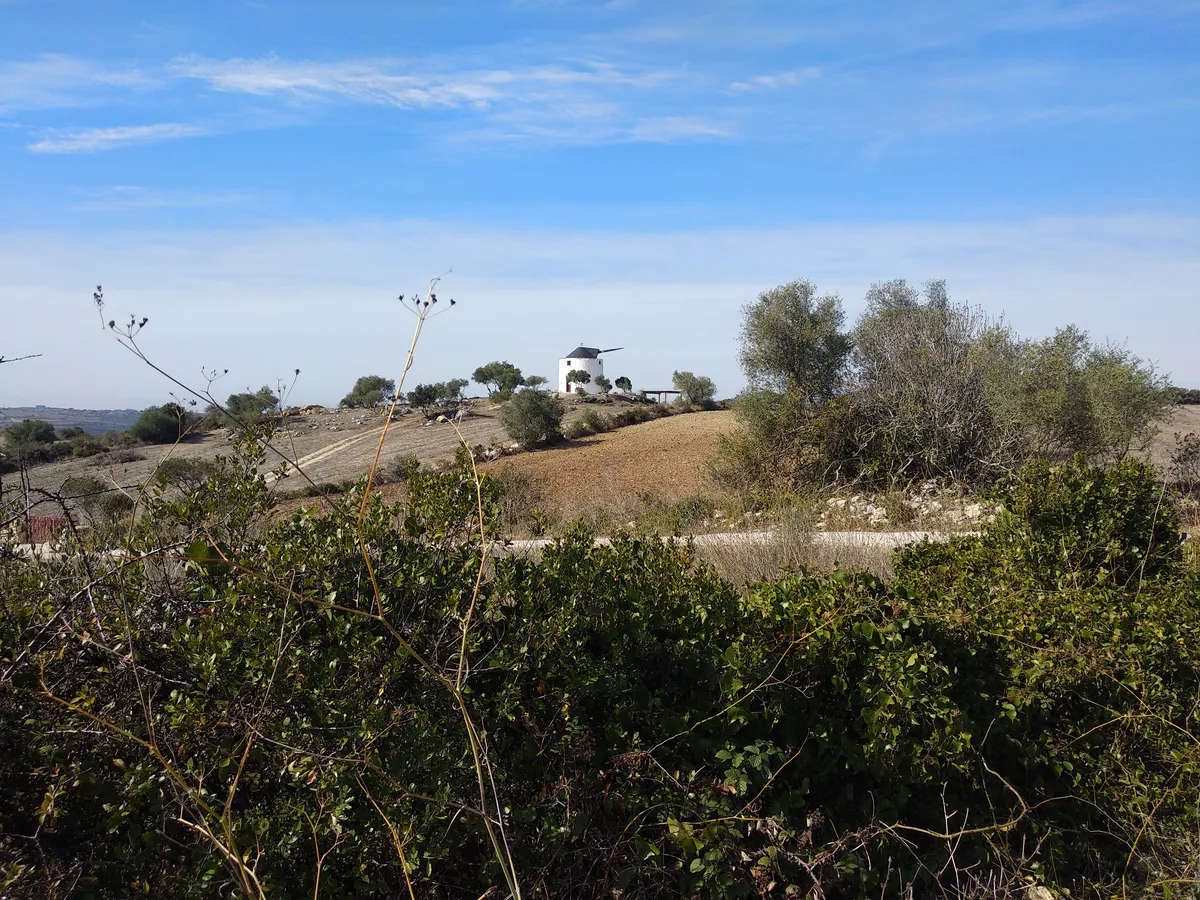
Even though the electric windmills are gigantic, and sometimes noisy, I feel like its an extension of the tradition. They are an evolution of traditional landscape in these parts.
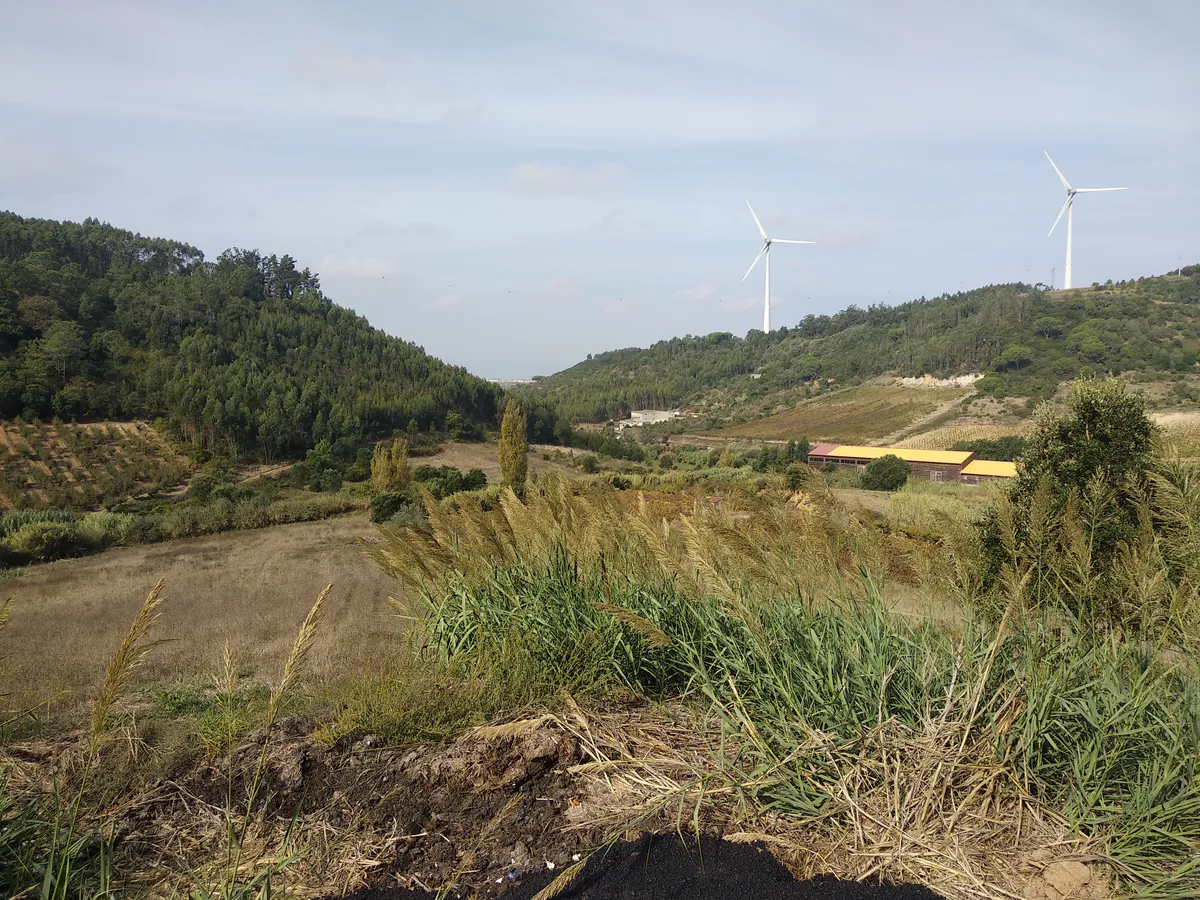
They are quite ominous though. These two makes us question if perhaps D. Quixote was not that wrong in calling them giants. This photo feels like a mix of D. Quixote with Simon Stalenhag's art concepts. A pair of mechanical giants looking out above the hills, guarding the valley...
Just for fun, here are some miniatures of the traditional village and architecture of the region, with windmills being preeminent.
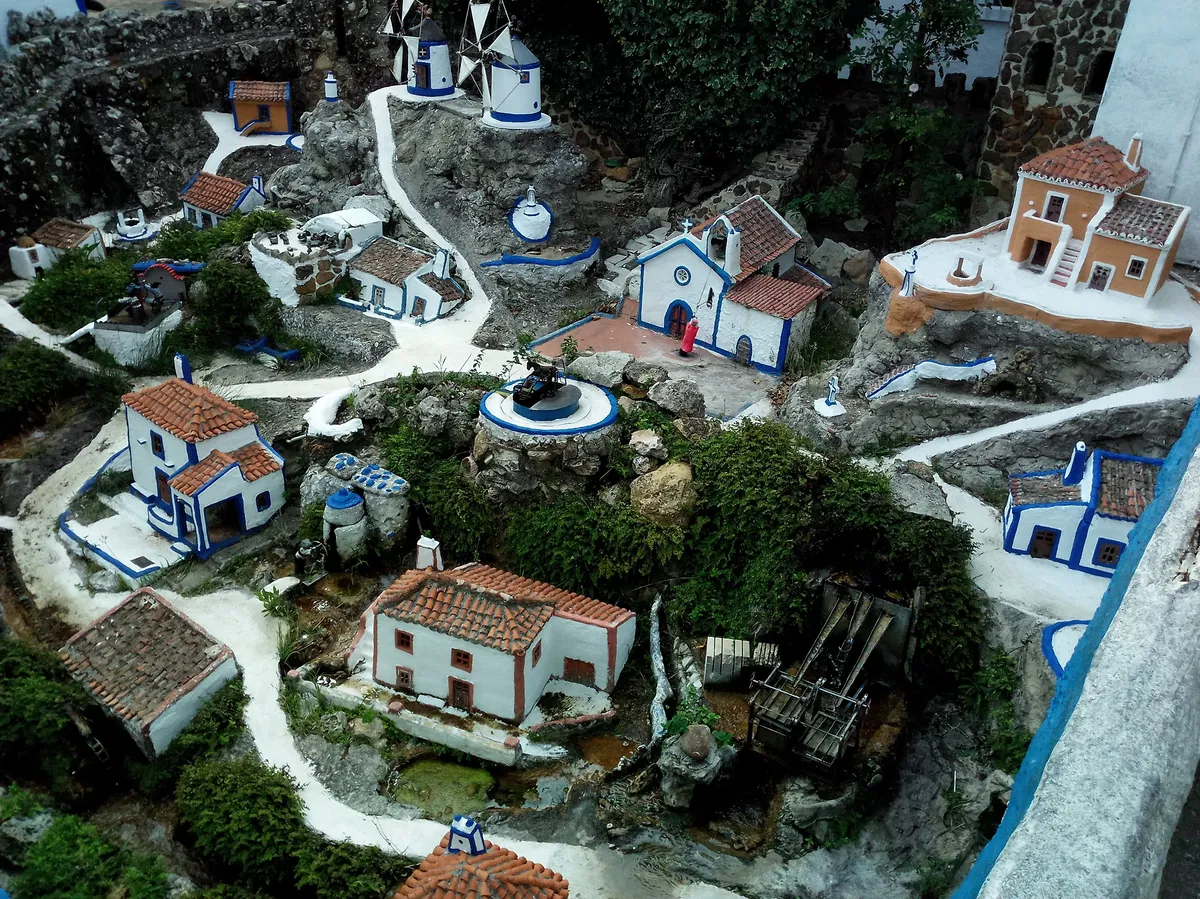
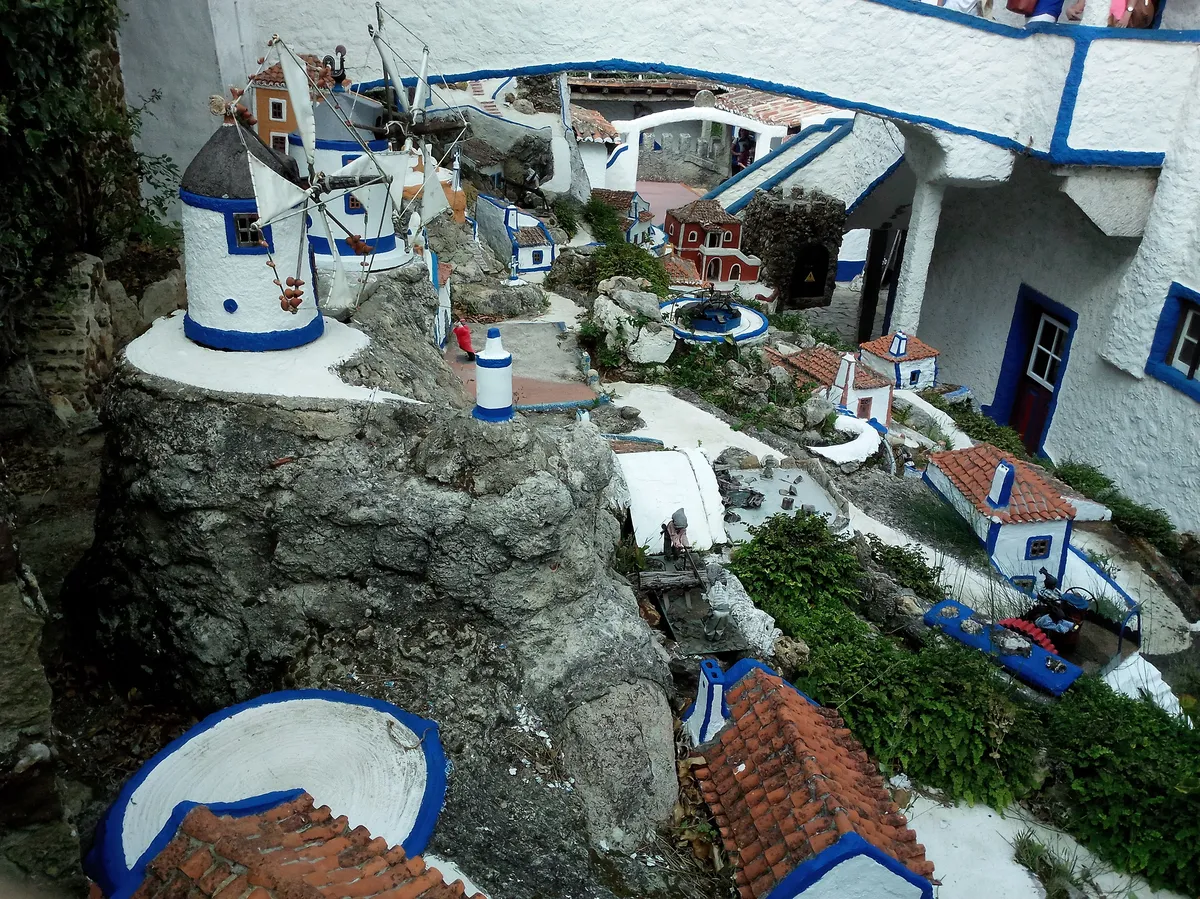
These are form a mock-up village thingy we have here. Essentially, a man that worked with ceramics starting doing miniatures and it turned into a veritable ethnological museum. It's a micro village with miniatures in it. If you're interested, you can check it out online. It's called "Aldeia Típica José Franco". This is usually a must visit spot that I take my friends to visit. These photos were from such occasion.
Okay, back to landscape!
The wind took us into that nice shortcut, but now we're back to cool things I saw while cycling. Speaking of which, I haven't shown you my bike yet. Here it is, all loaded up from the time I did a three day bikepacking trip (not in my howetown, but photo was taken in my village).
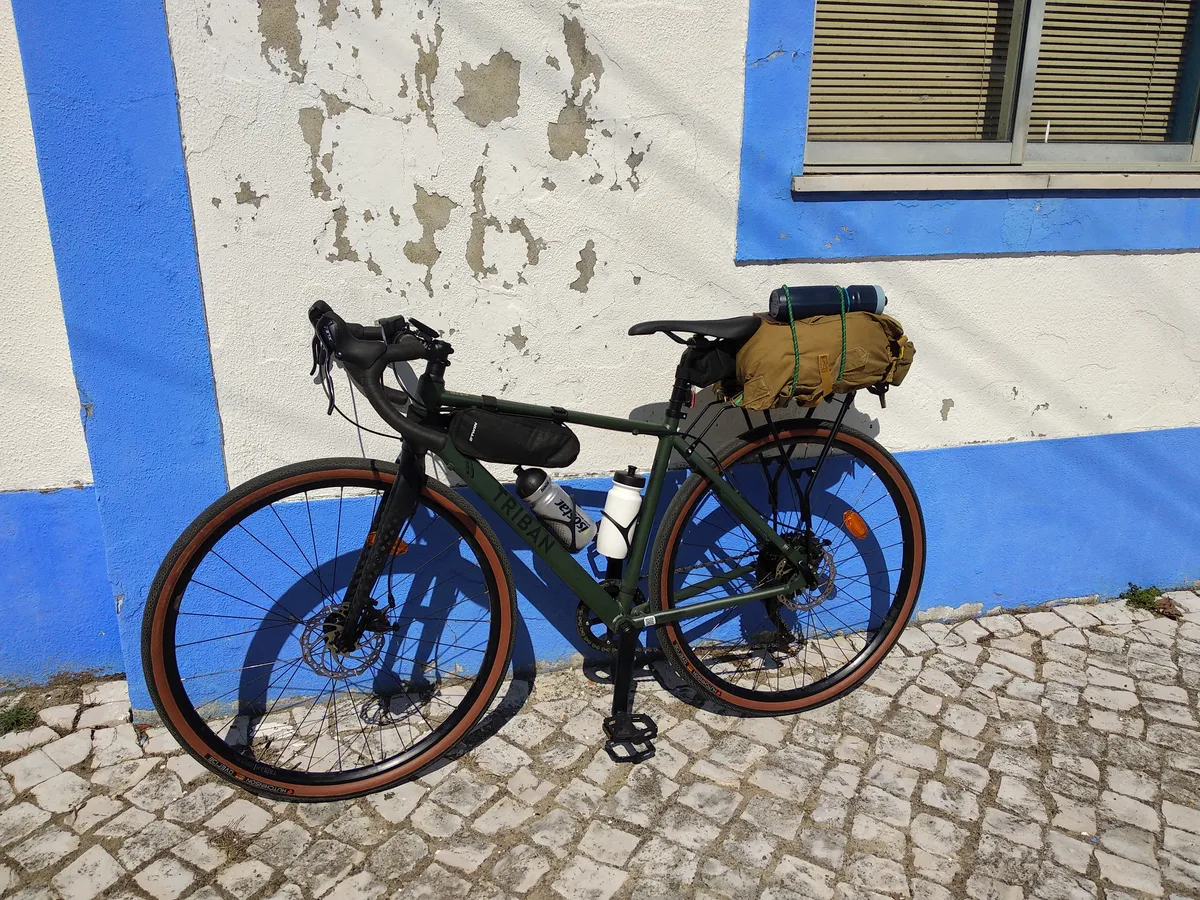
Nothing fancy, and that rack was jury-rigged à lá portuguaise. It broke almost immediately, but we made do.
Roads
My hometown is a paradise for cycling. The roads wind and turn around the hills, there's a bit of climbing and a bit of descending. You can find routes on top of the hills, in poor imitation of flat ground, but good enough! Here are some roads that I liked particularly, enough to merit photos.
My bike is a gravel bike. There's a great route, called Ecovia do Sizandro which follows the Sizandro river. It's 24km long, I've done it a few times. It begins (or ends) in a nice cozy seaside town, Santa cruz, which has beautiful beaches but I have yet to catch beach weather there. The Atlantic Ocean in this area is particularly cold, and Santa Cruz is really windy, more so than Ericeira, which is known for being very unpleasant. I came here often with my parents, and we tried to have beach days, but we always gave up and ended up just strolling around town. There's a small airfield and usually there are some plane events. In this photo I captured the final stretch of gravel, right by the ocean.
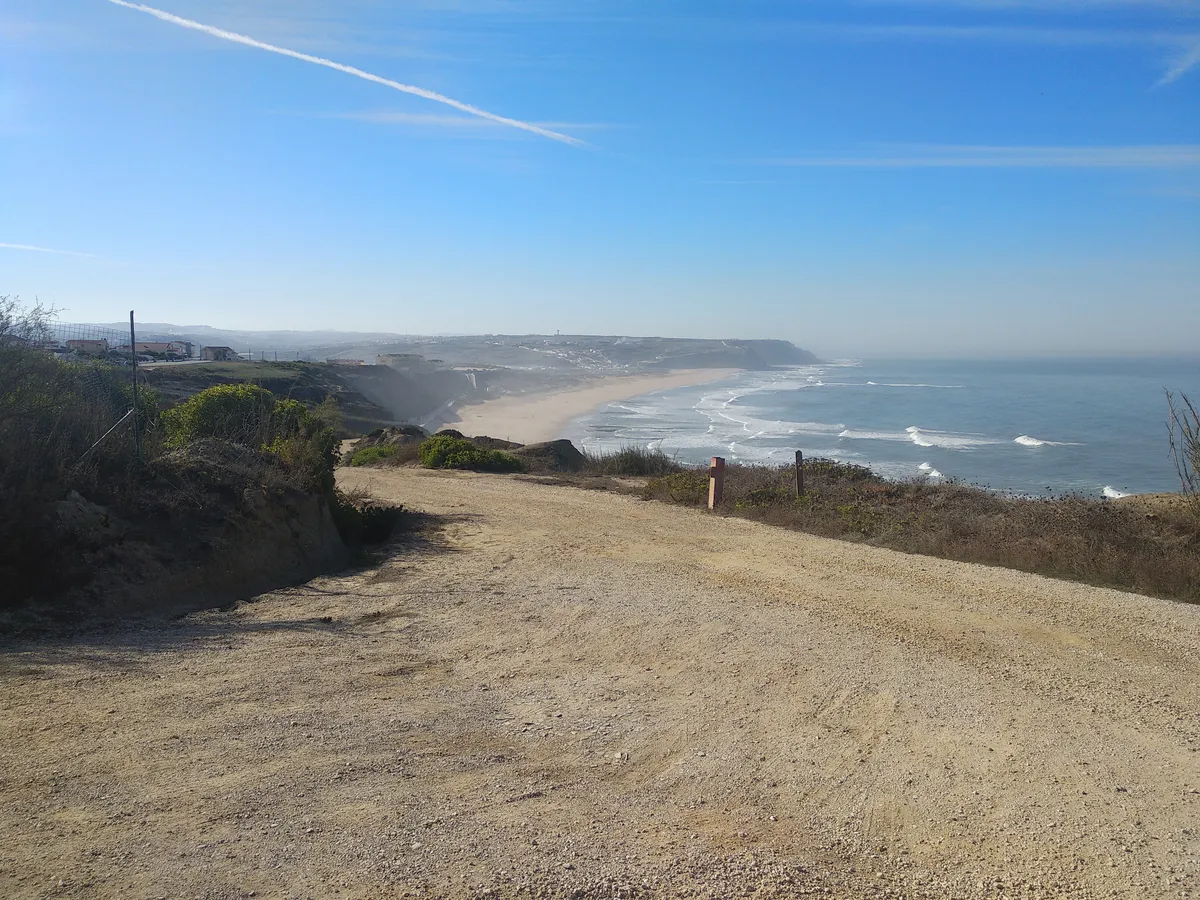
The first time I reached Santa Cruz on my bike it was an accomplishment. I never did go that far by myself before. Santa Cruz held a certain mystique for me, I always went there by car. Reaching it by bike, crossing through the gravel and dirt roads, felt like unlocking a new part of the map. I could come here anytime. I did go a bunch of times friends. But here's a pic I took commemorating the first time I made it. Please ignore the trash can.
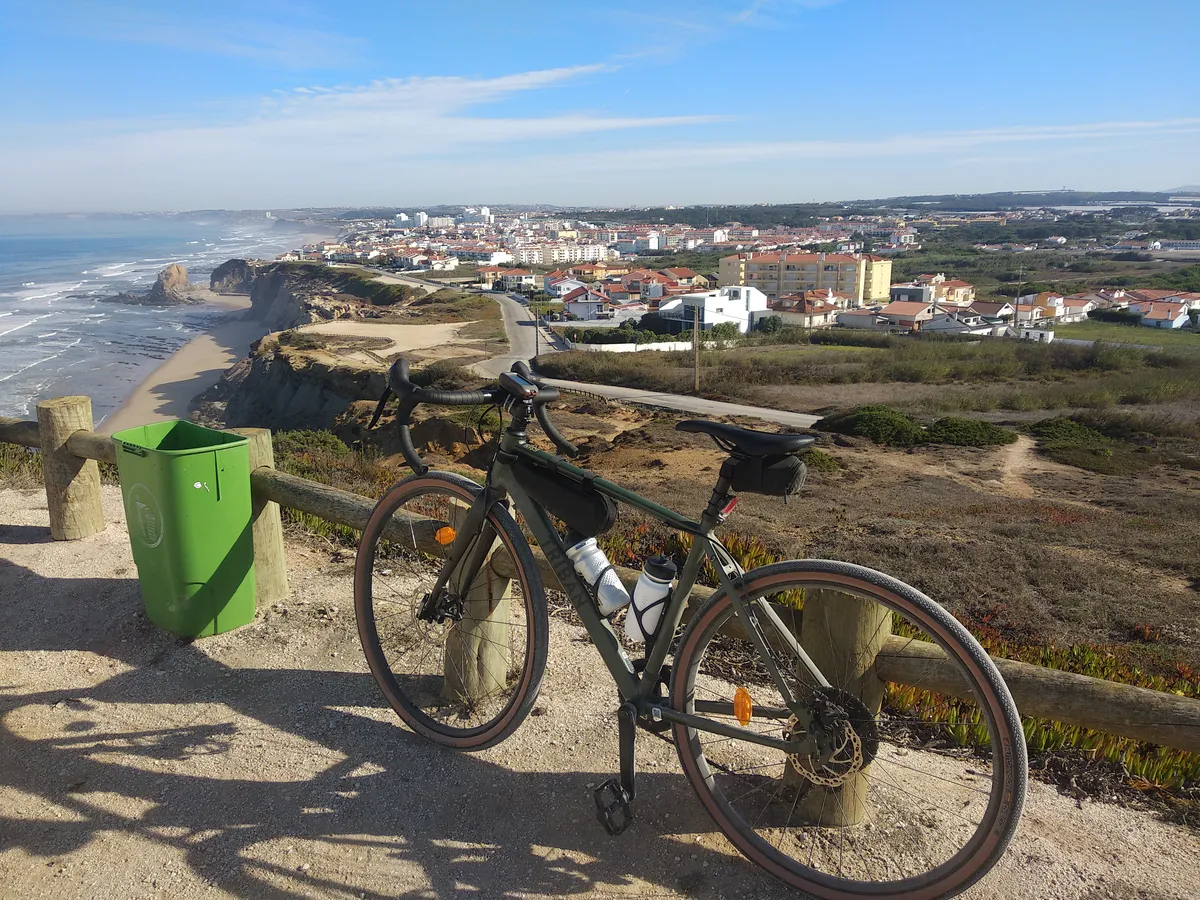
Some more photos of Santa Cruz, from the last time I was there. This is the "Formosa" beach, which means gorgeous. It's beautiful, but goddamn it is cold!
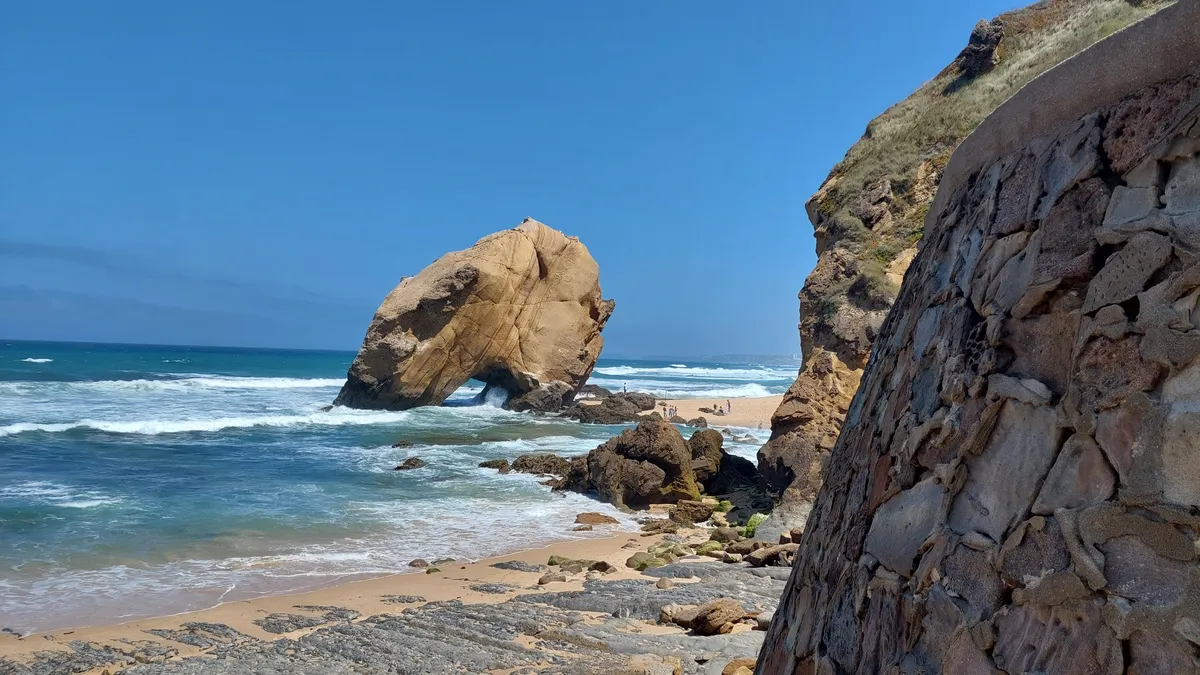
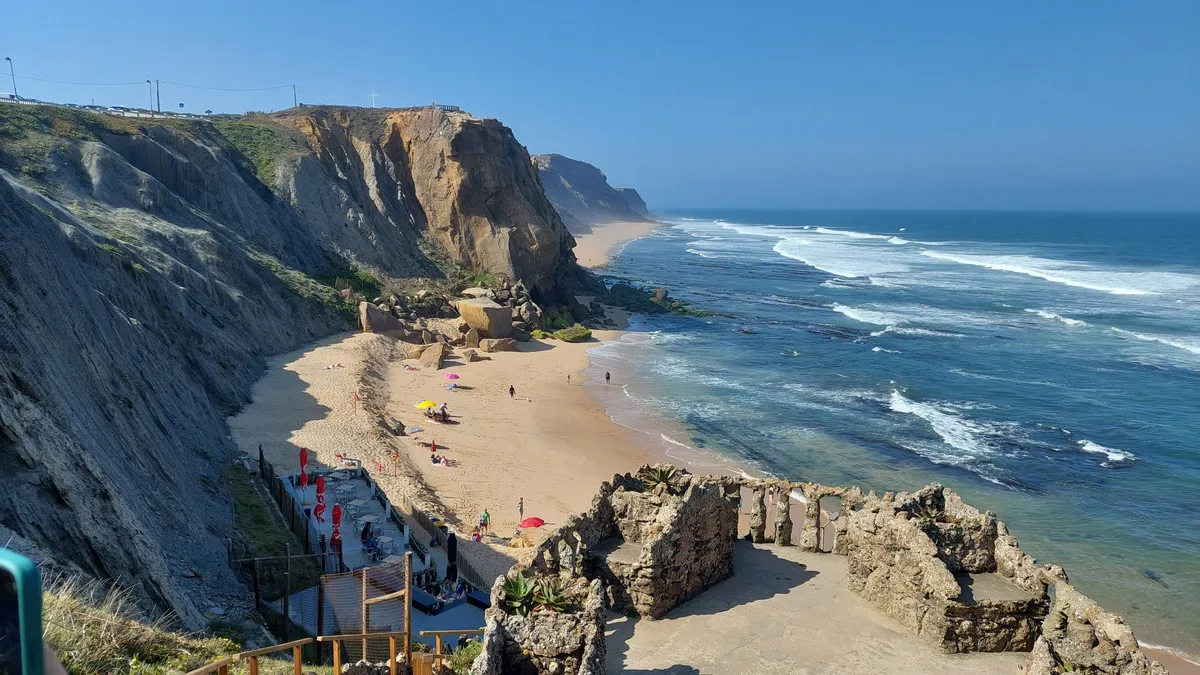
There's the ocean, but also the deep valleys. I love to get lost in these little roads. They are in surprisingly good condition, get little to no car traffic, and follow the riverbeds through the valleys. It's always so green!
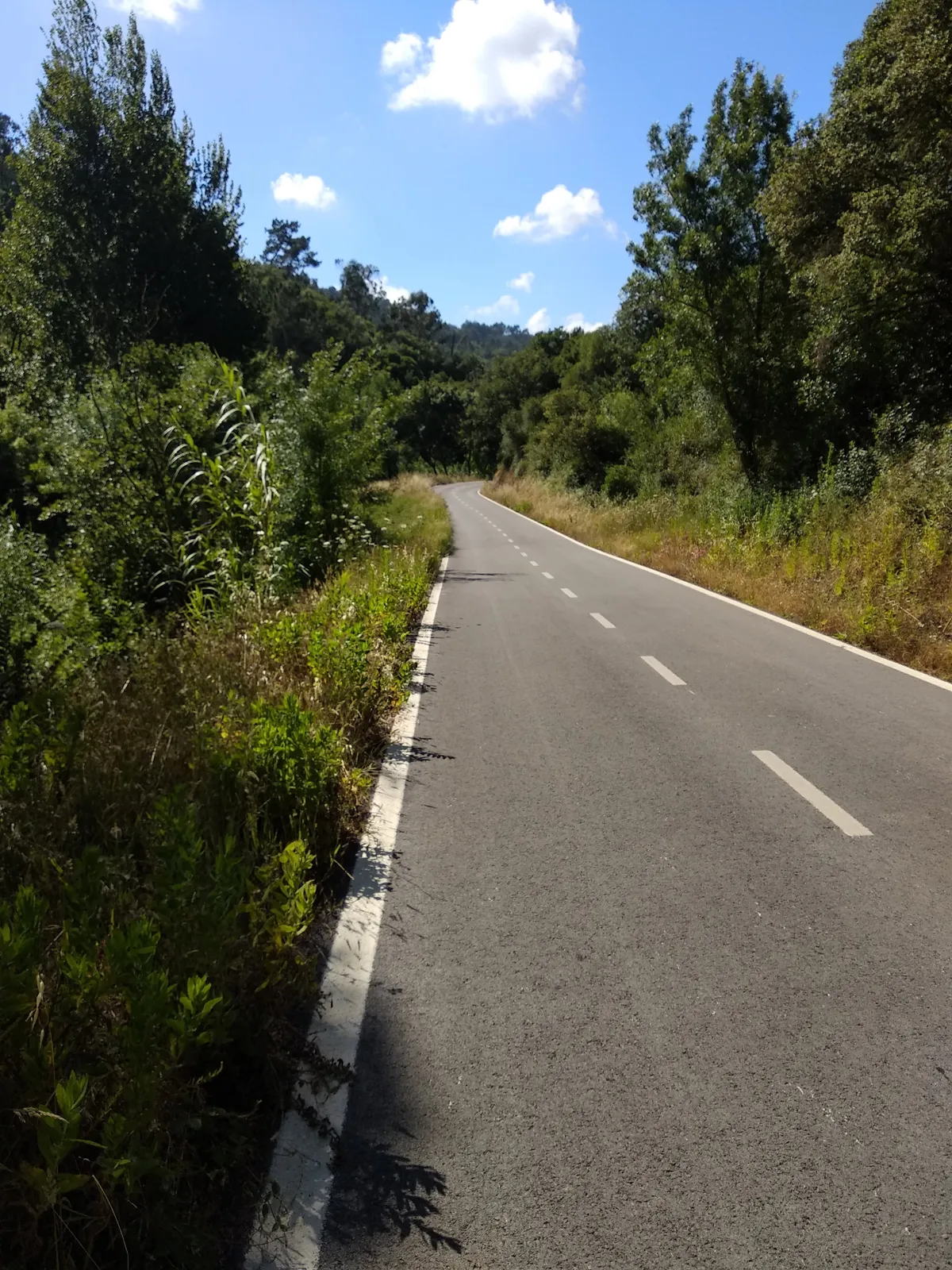
I once found an old little village, hidden in the hills. The only road access is through a gravel road full of rocks.
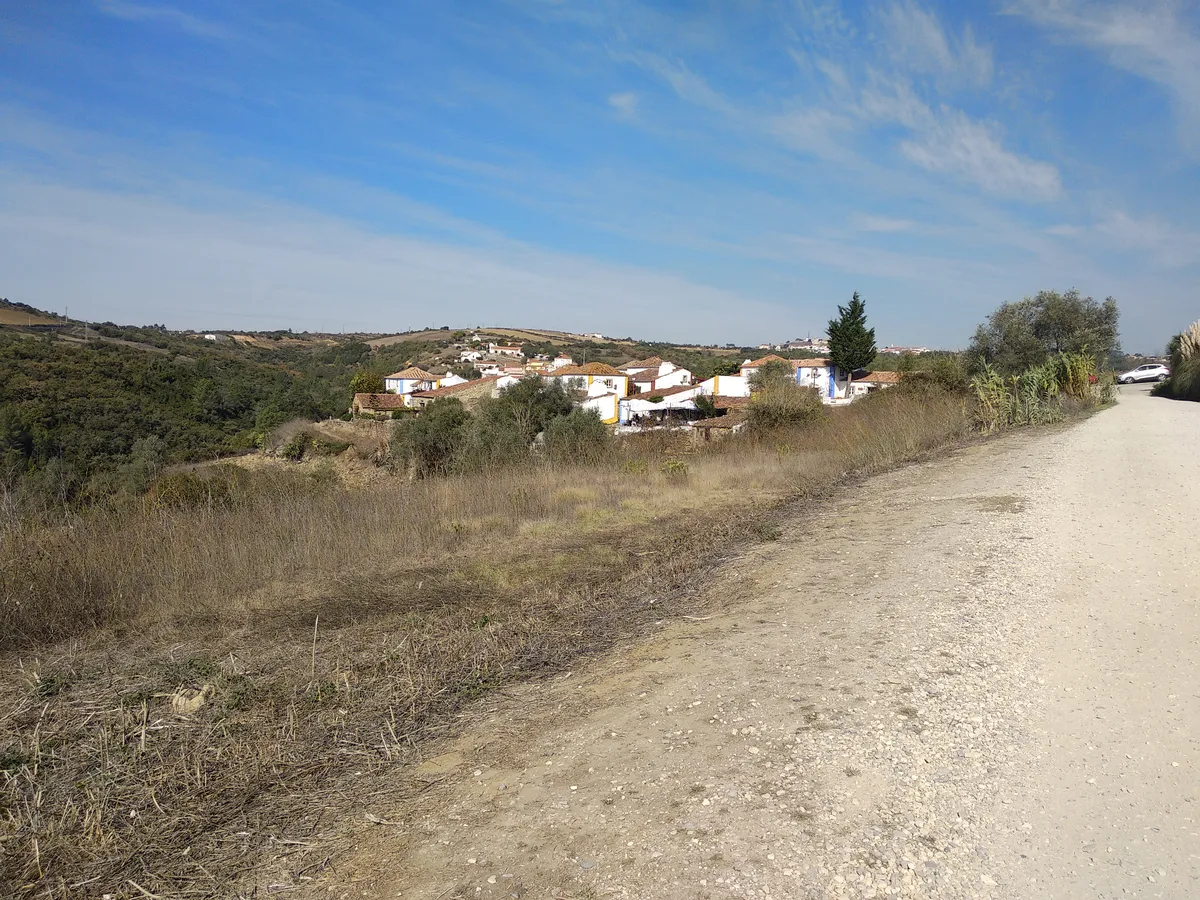
There was a steep downhill after this. But down in the river bed I came across a medieval bridge. It was built upon the foundations of an ancient Roman bridge, but not much else is known about it. Lots of Roman archaeological evidences were found around it. Up close and personal:
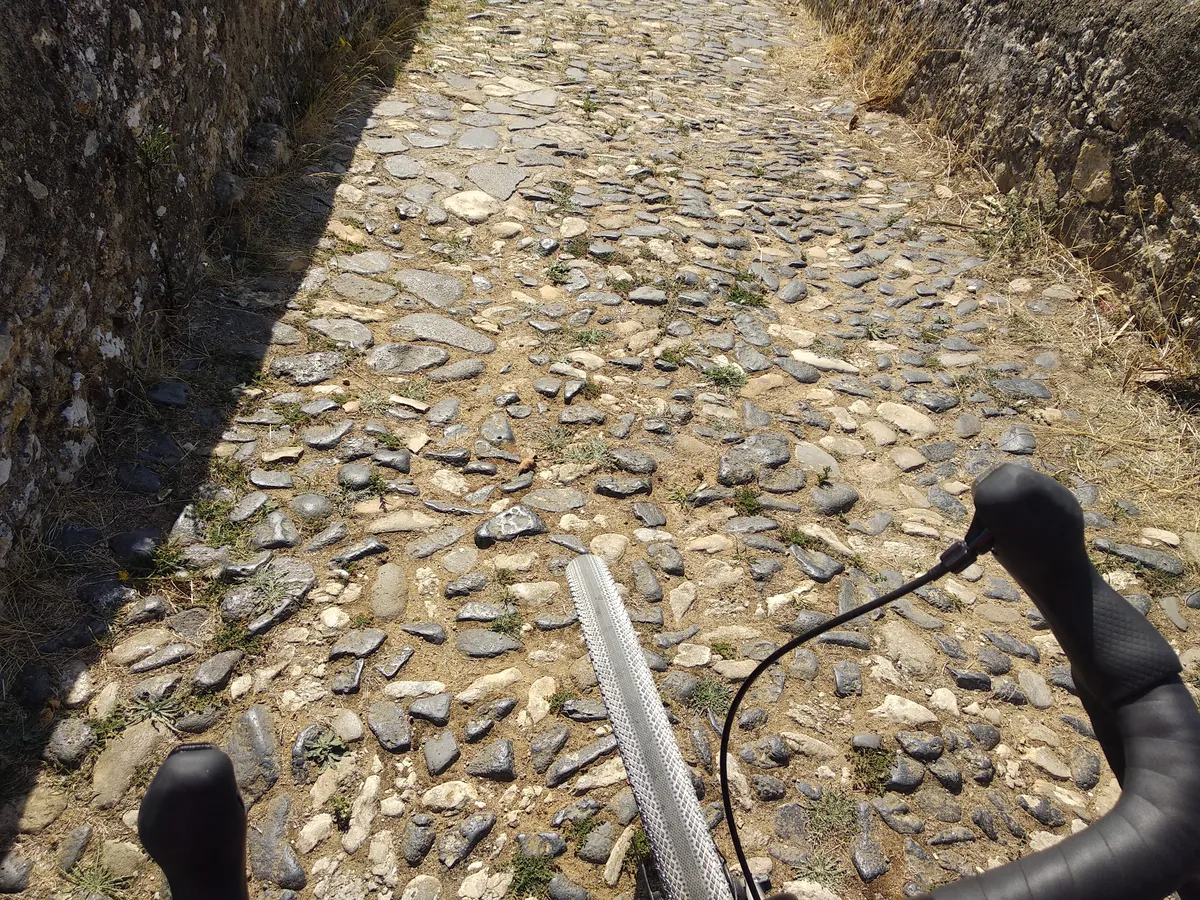
And from an angle. On this side of the river there is some pasture with sheep grazing. On the visible side, you can see some houses. The river is really a creek.
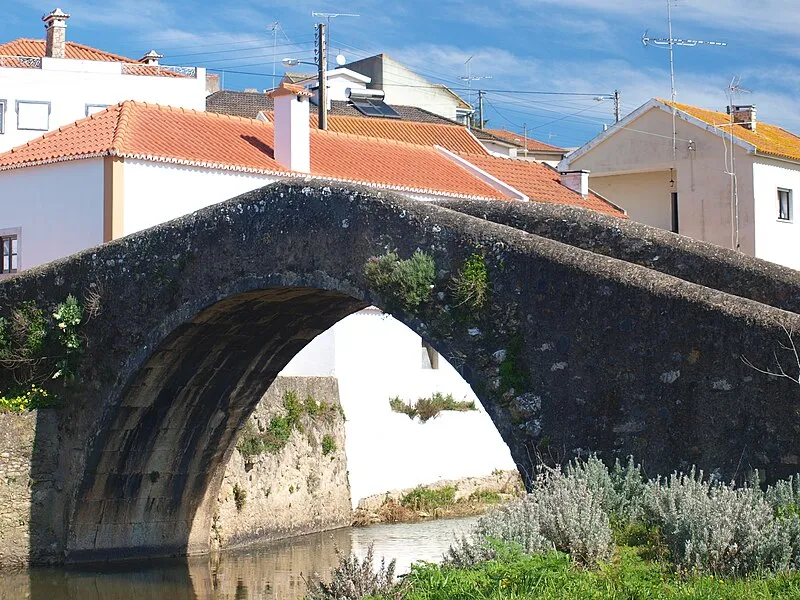
Less to say about these next few photos, but I think they are cool.
A little fountain and a stone table and benches. There are quite a few of these around, but this one was particularly quaint.
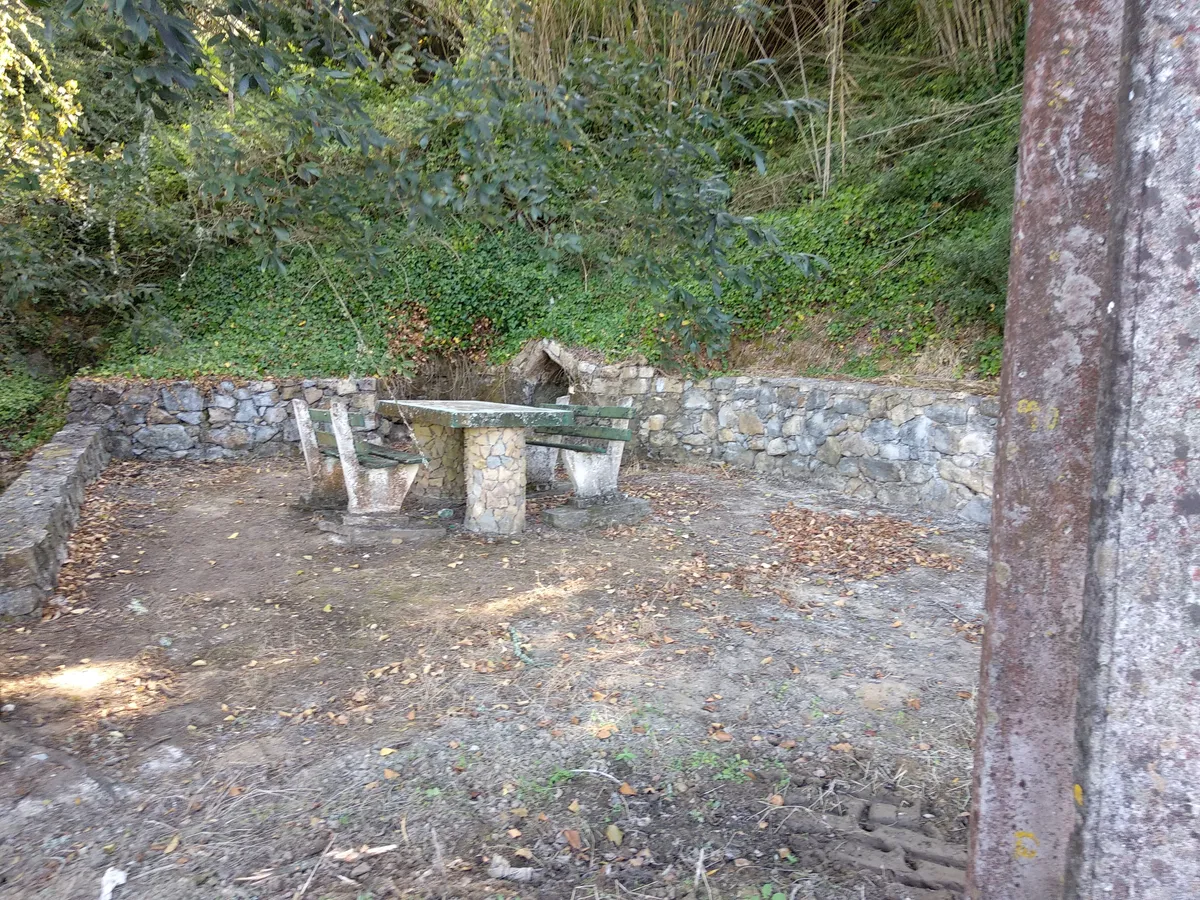
I stumbled upon this cross, on a hill overlooking the ocean. I think someone died here.
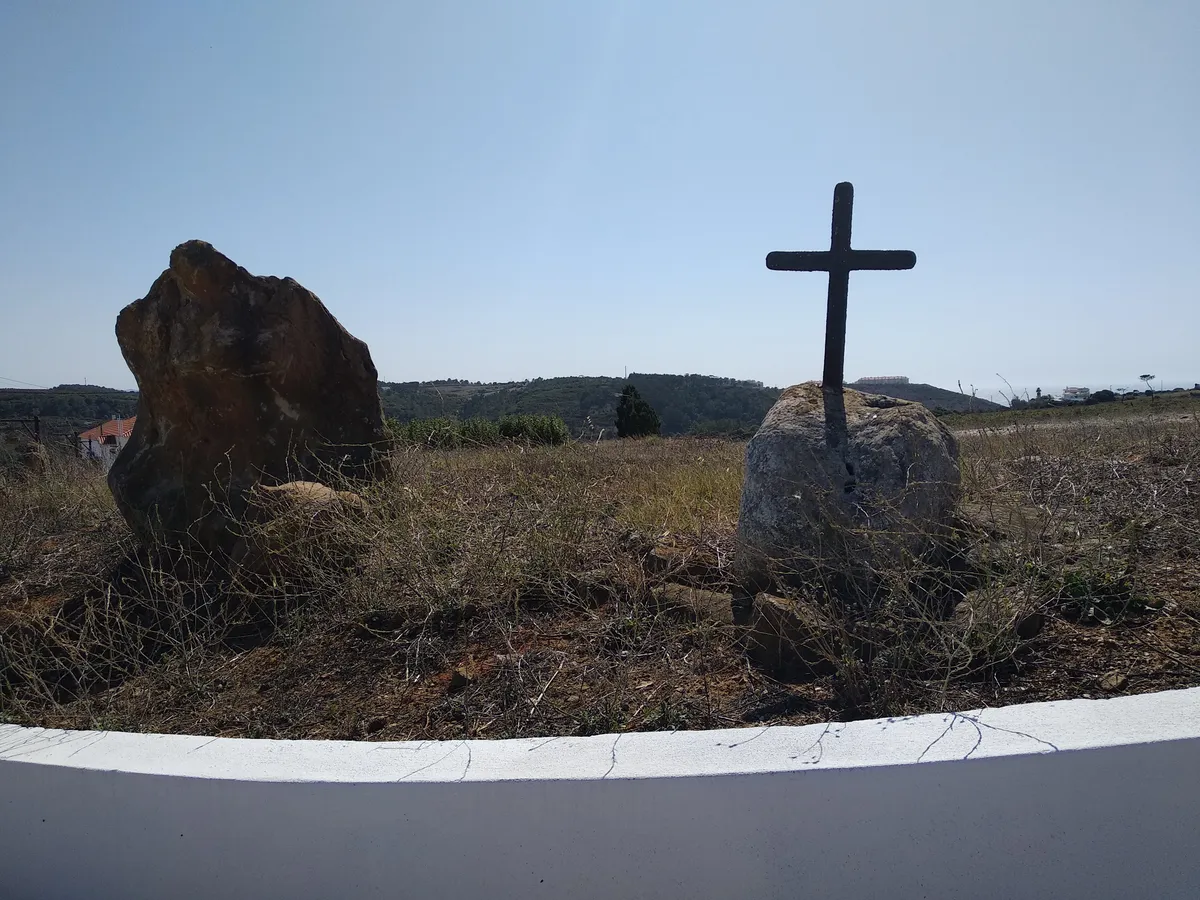
A little creek that was coolly flowing in the winter.
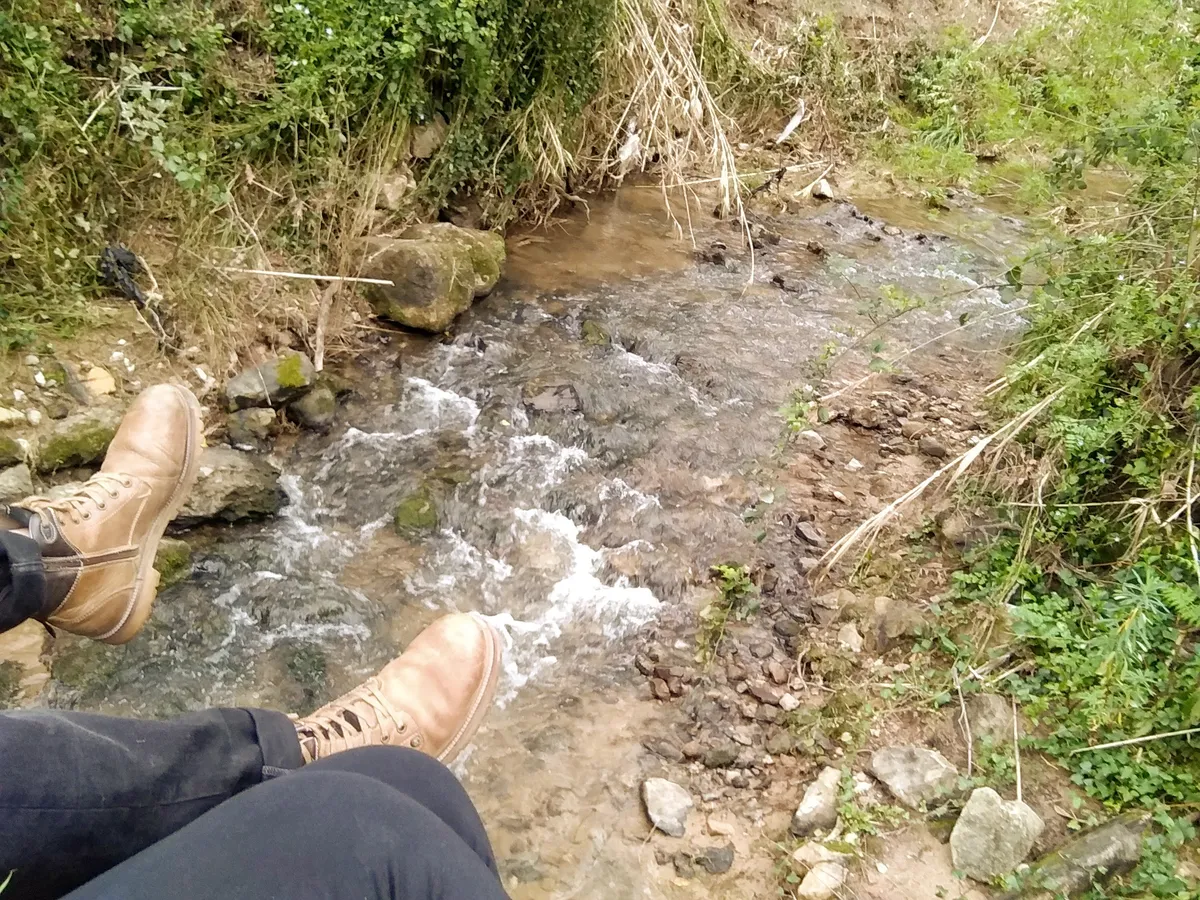
This is the highest point in the region. It has an old hermitage at the top, with a cool little bell.
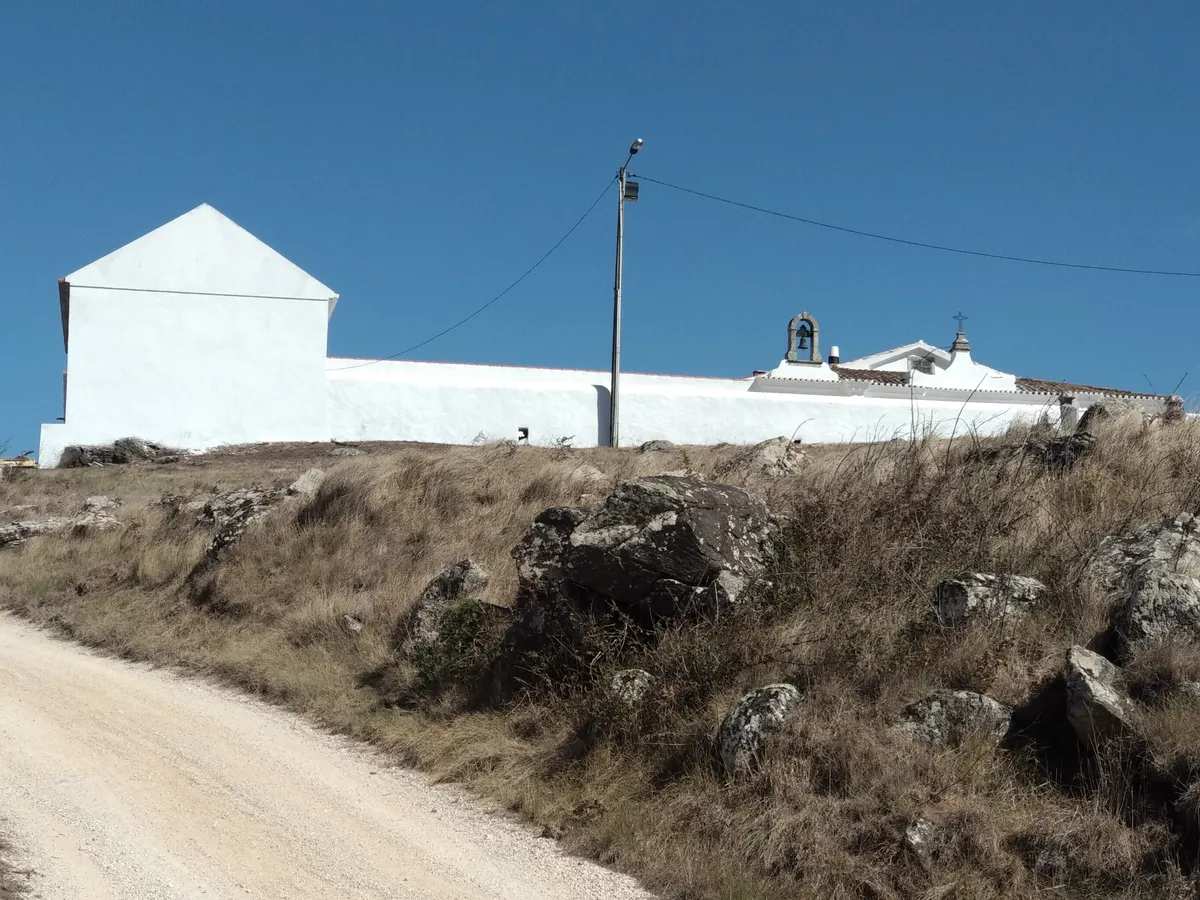
And this is the view from up there. I'm particularly proud of this view because I had to climb it on my bike!
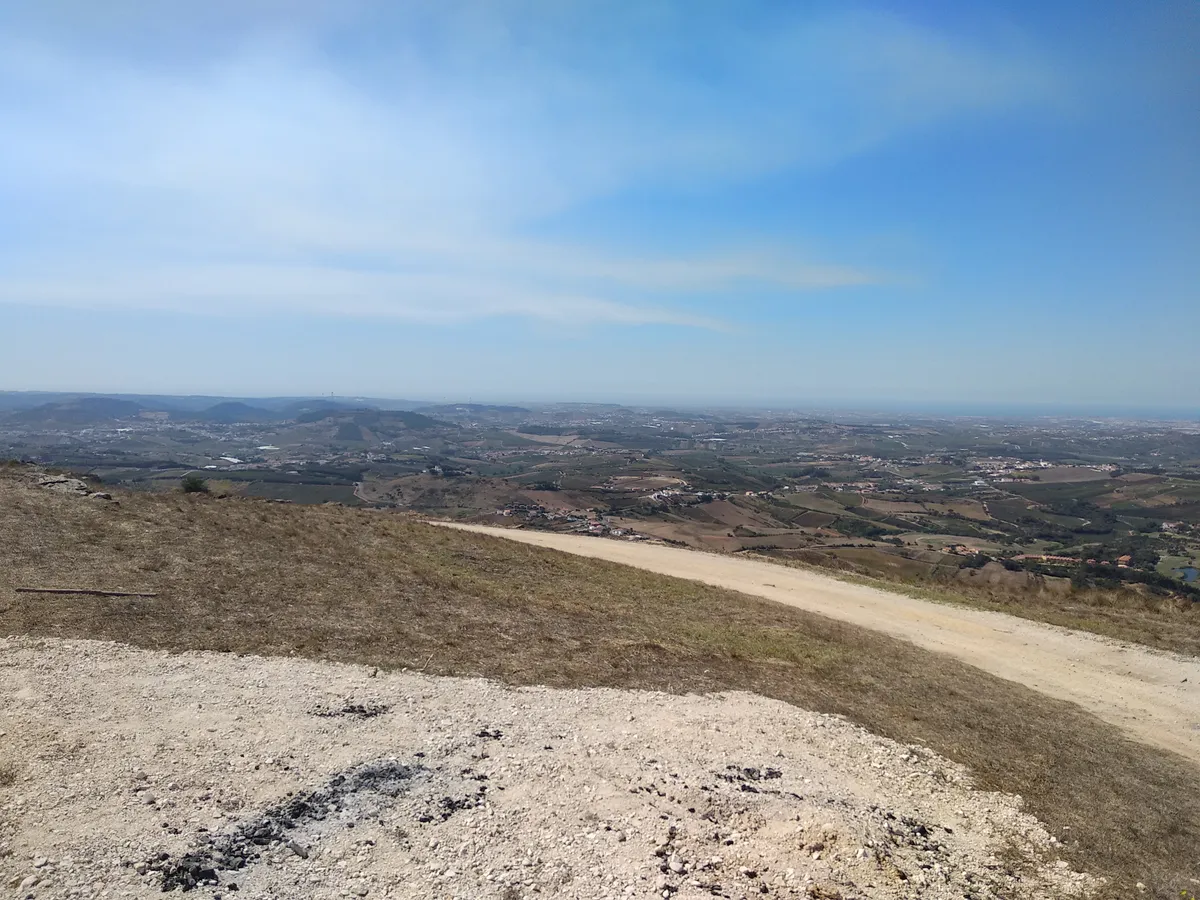
This one is from Ericeira, the coastal village in Mafra. The weather is always a bit misty and humid. Here's proof!
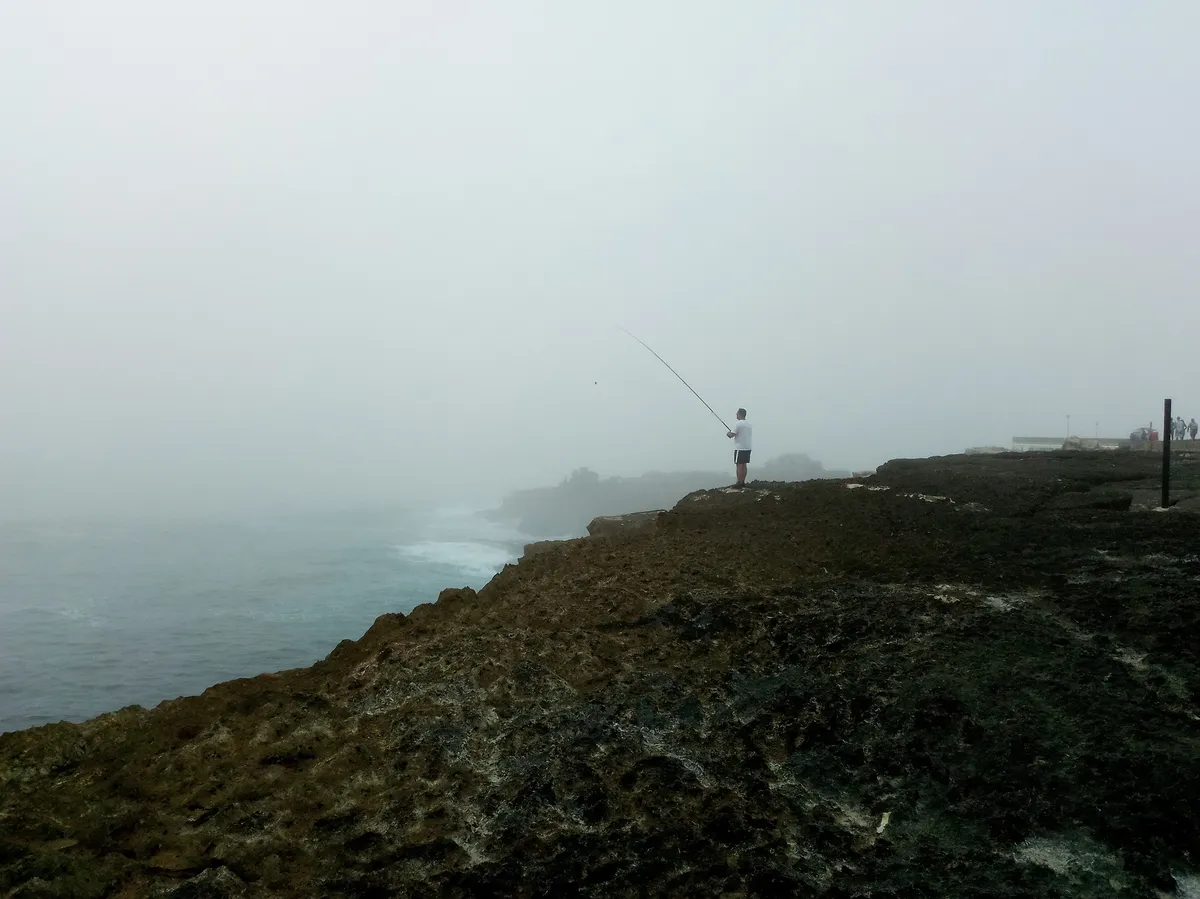
The end! I hope you found this any fun. I might come back later and add some more stories and/or photos. I'm also in the mood to do a deeper dive into some of this stuff, in individual posts. But this was fun for me.
E-mail me your thoughts.